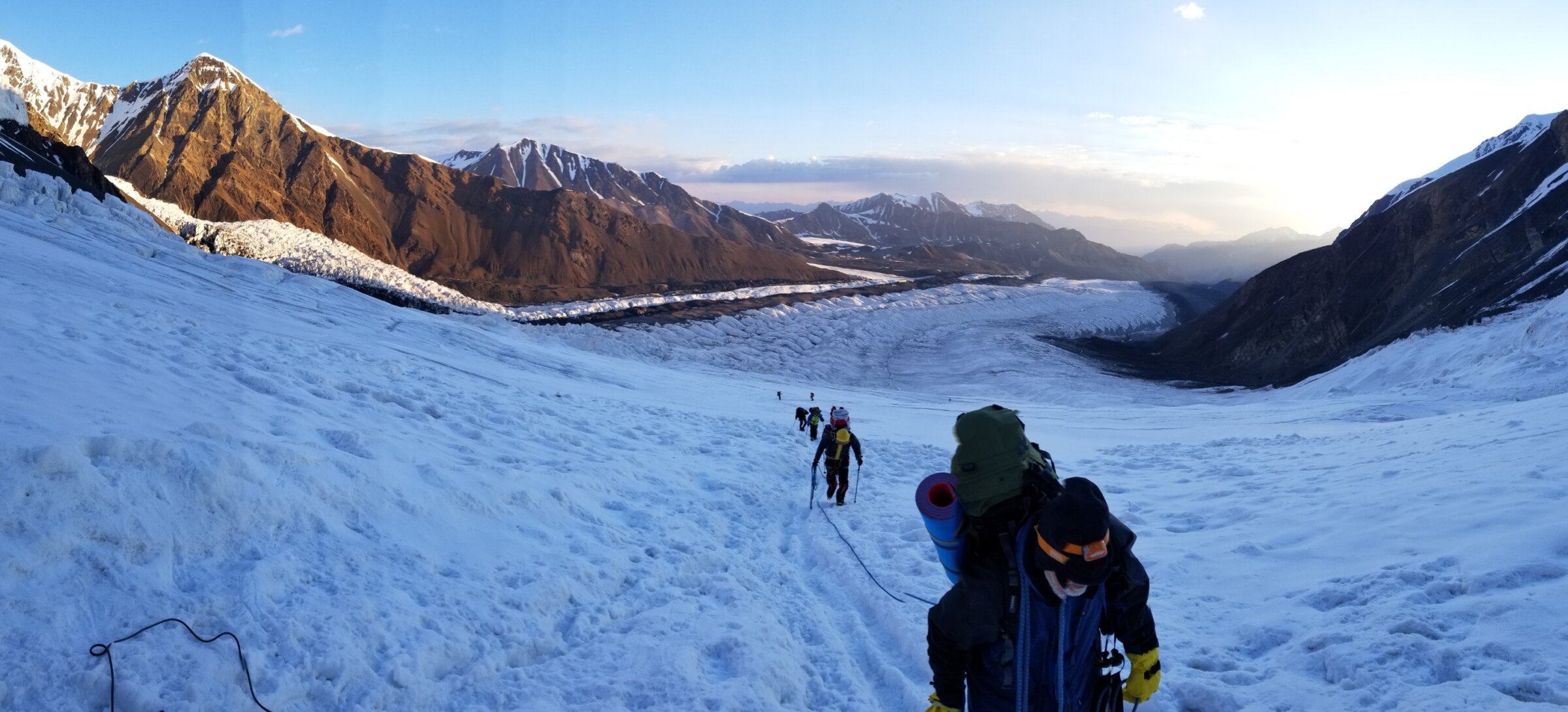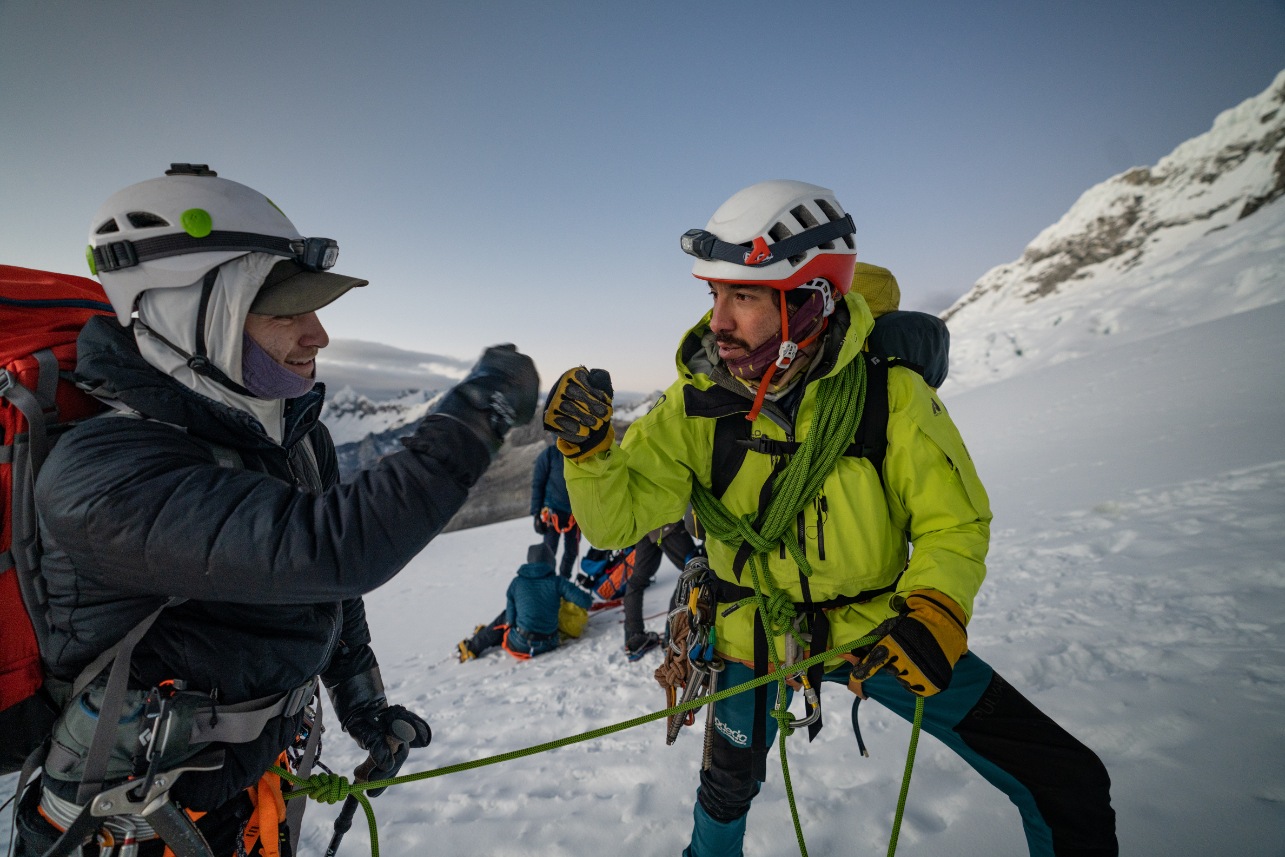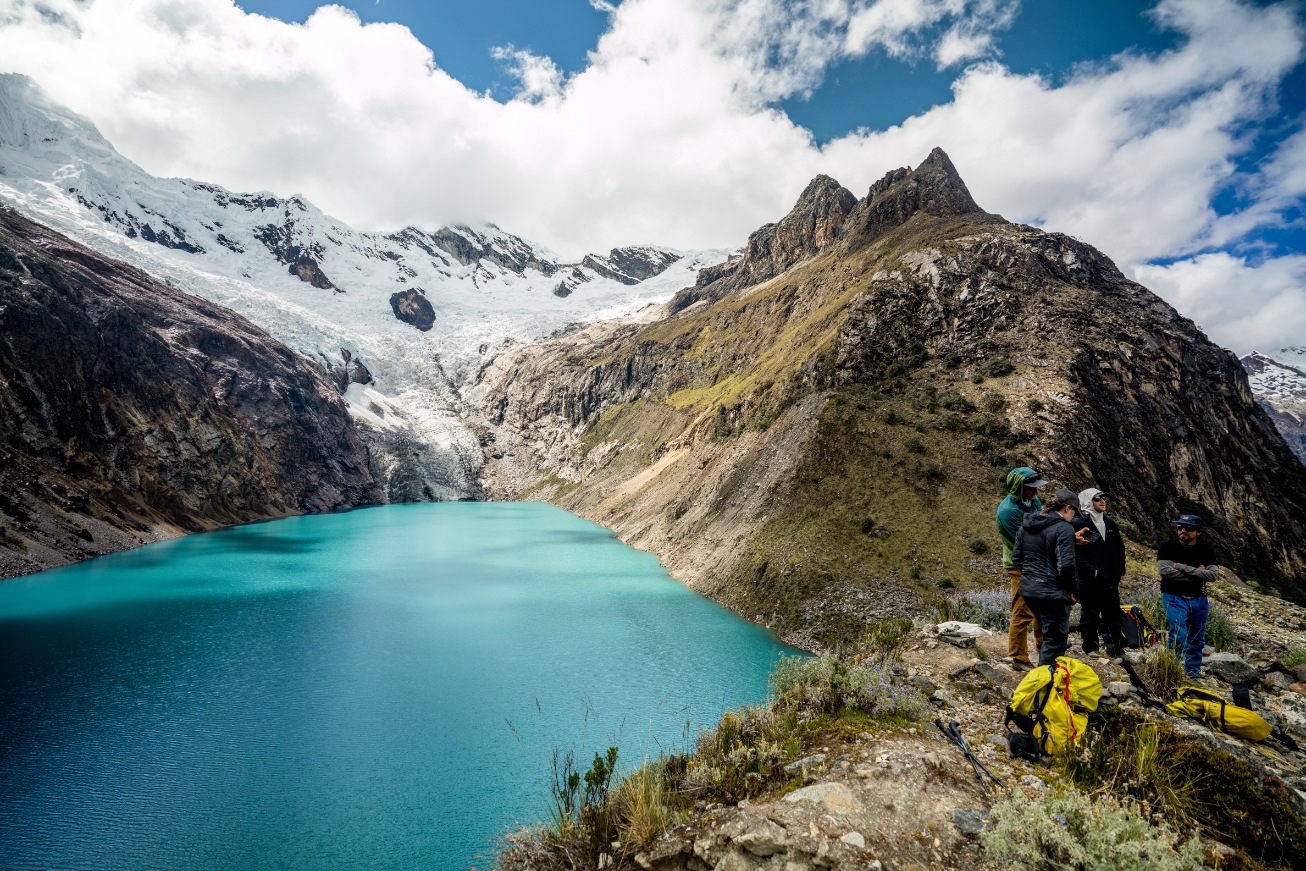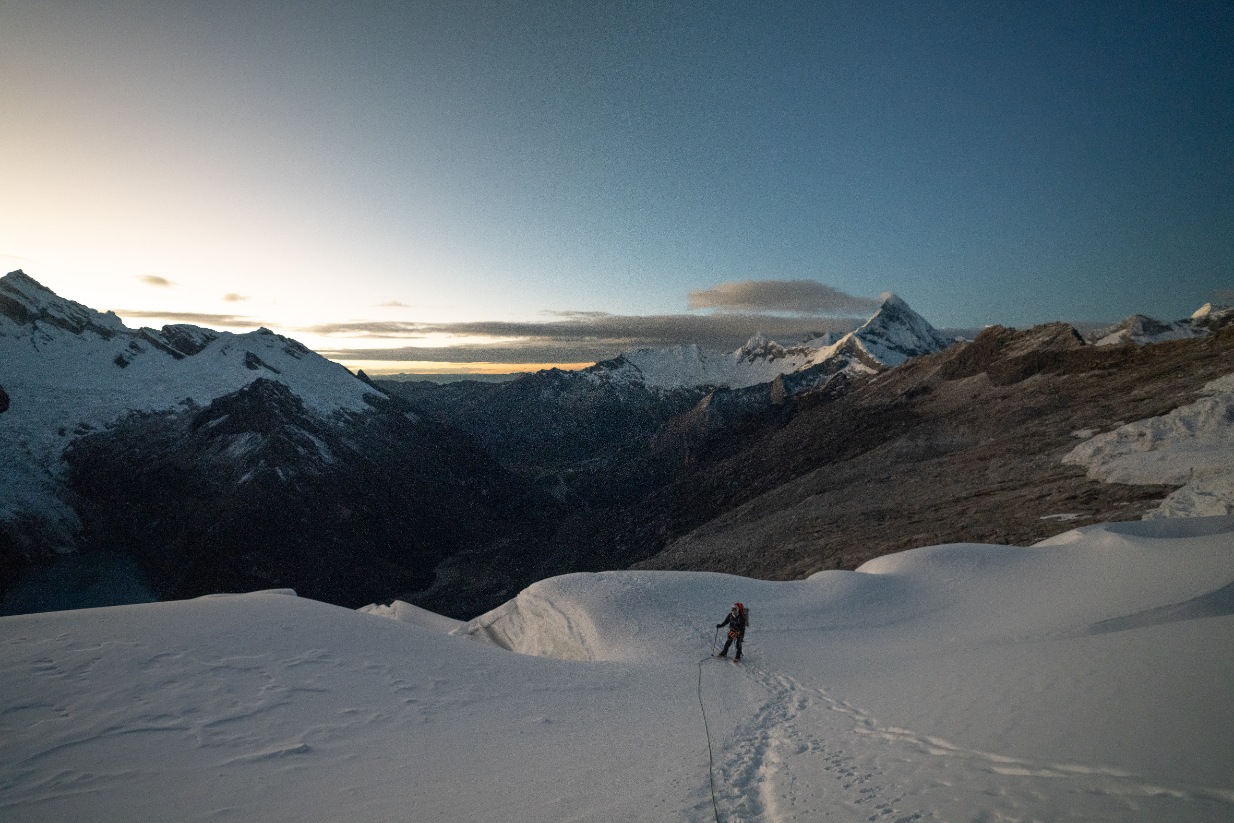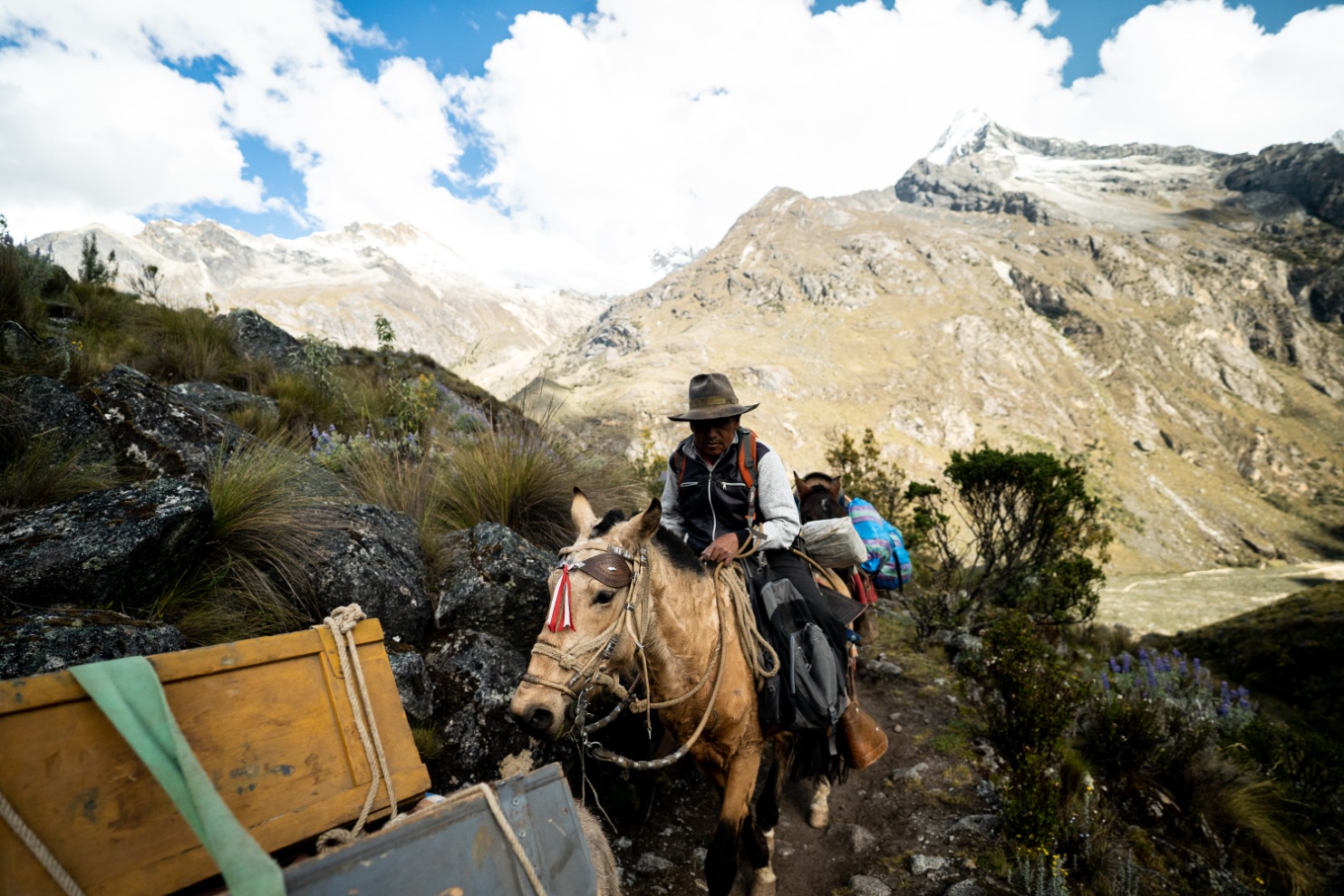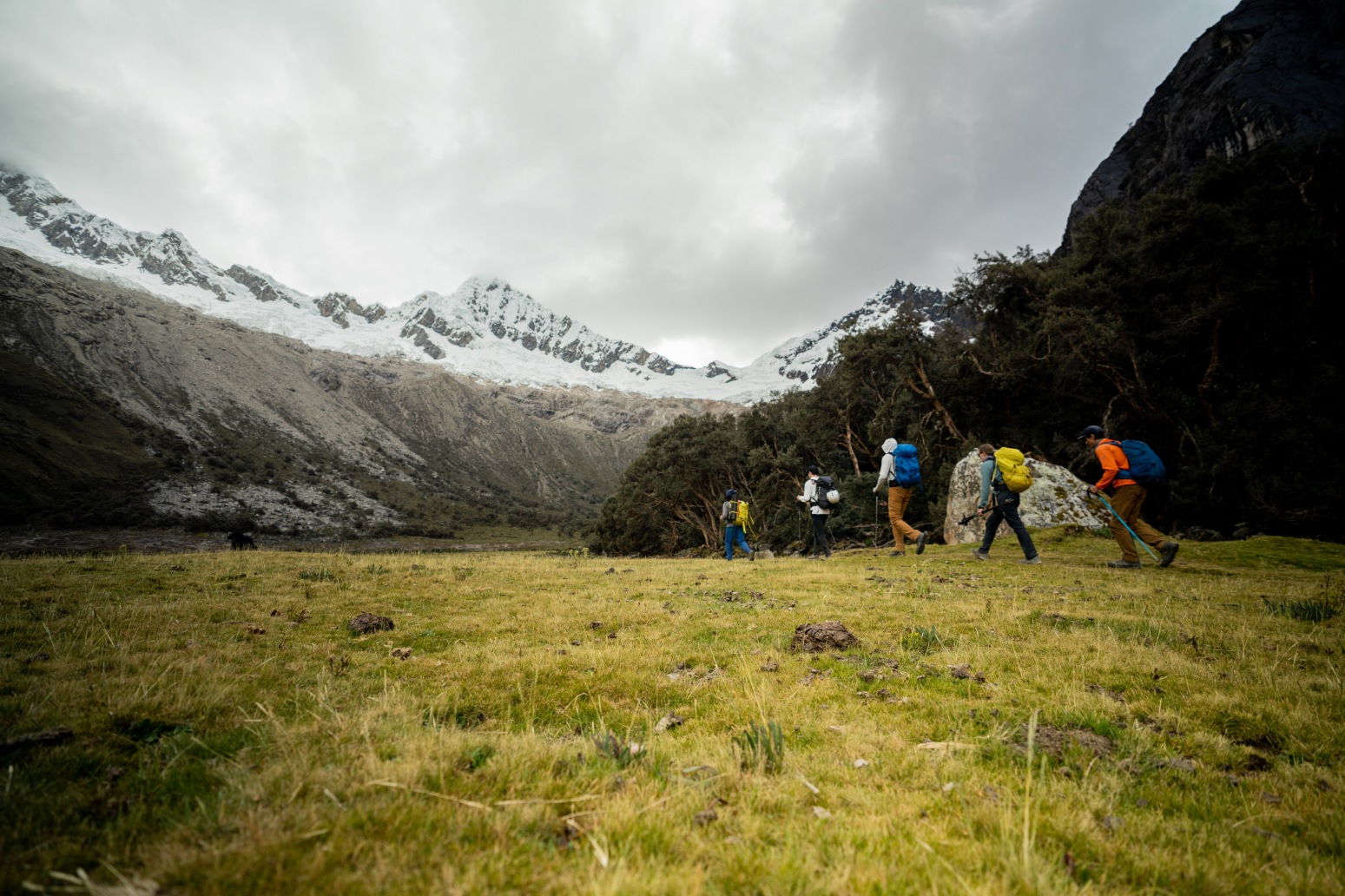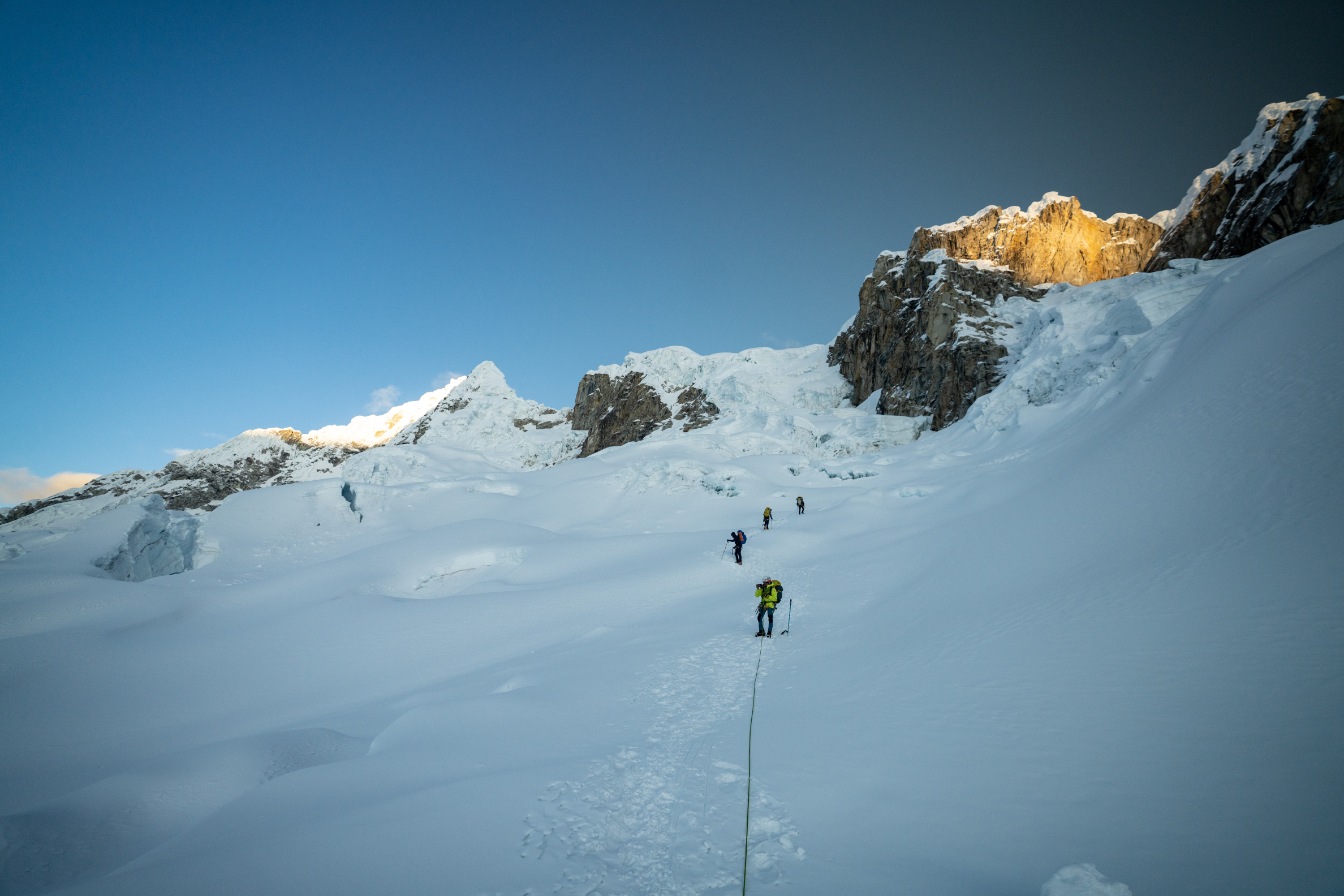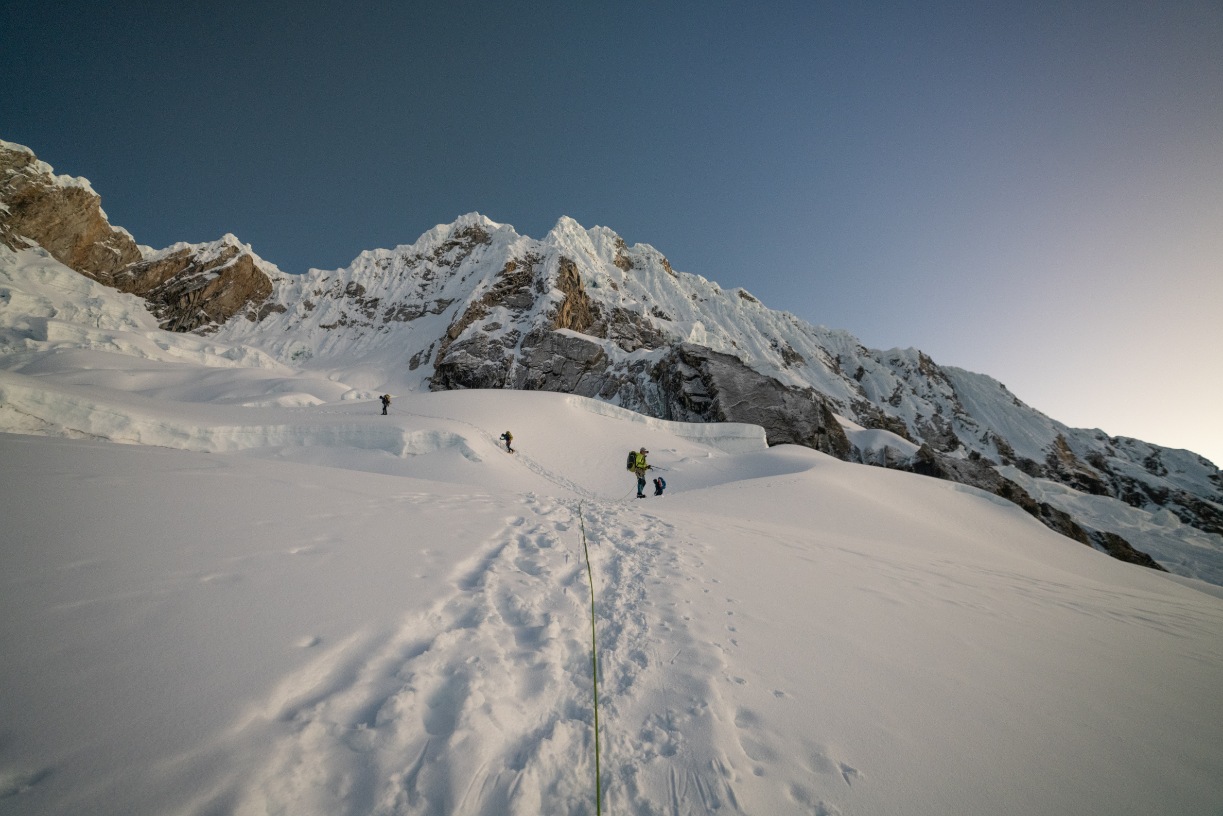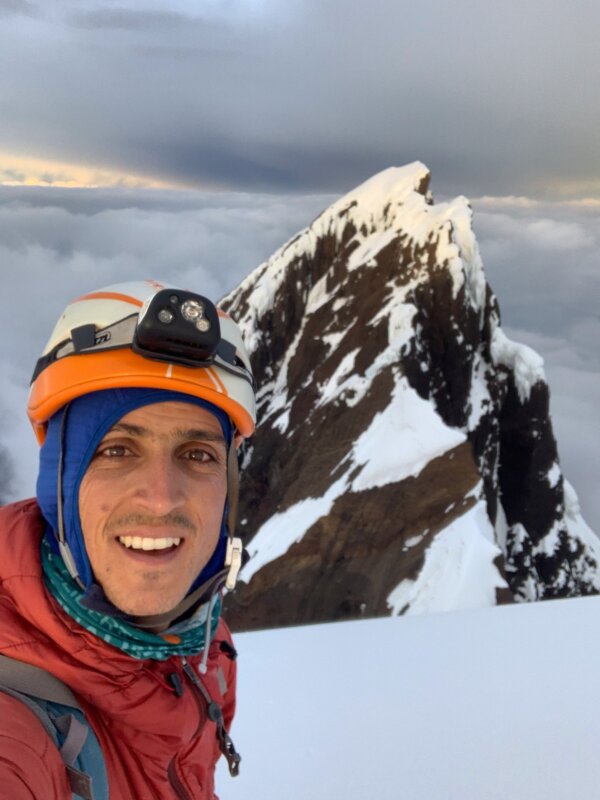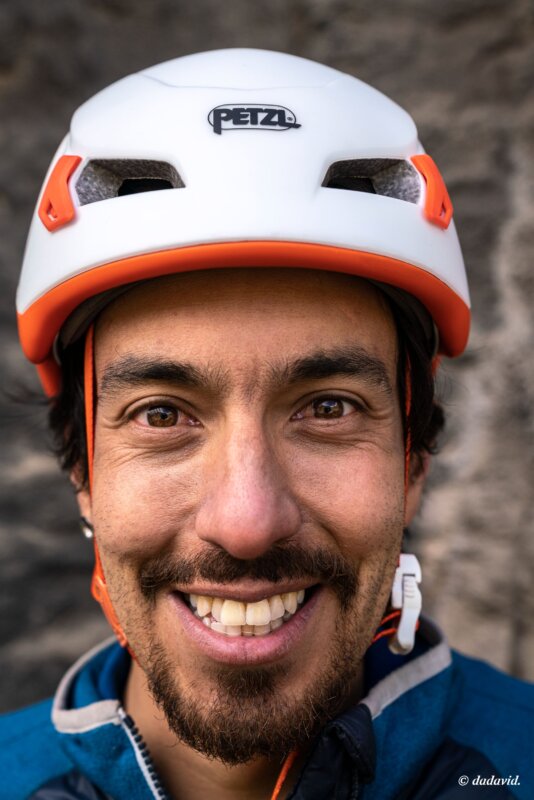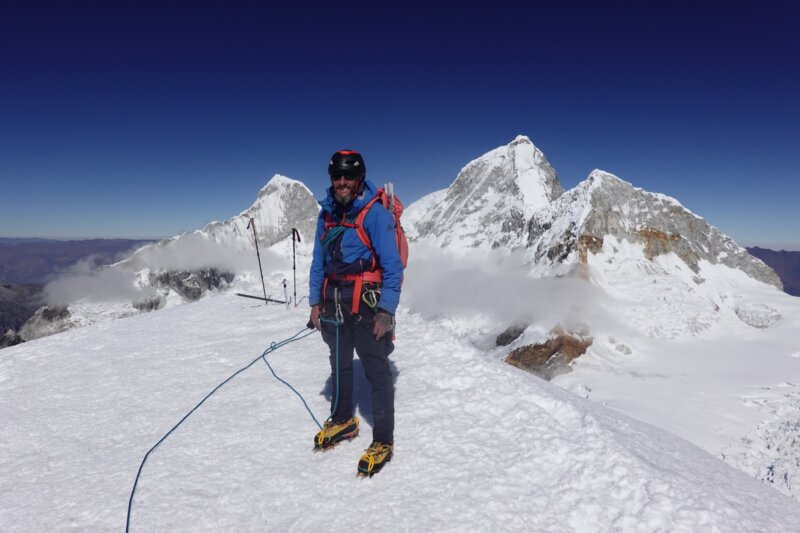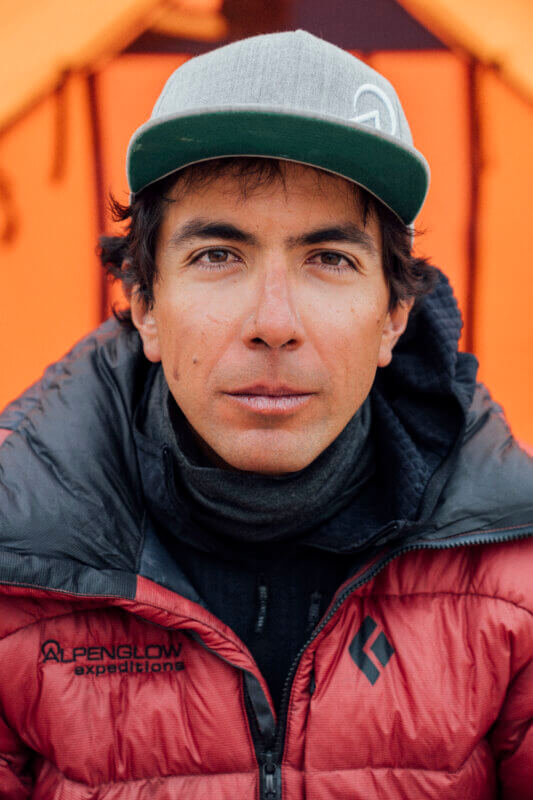Alpamayo & Quitaraju
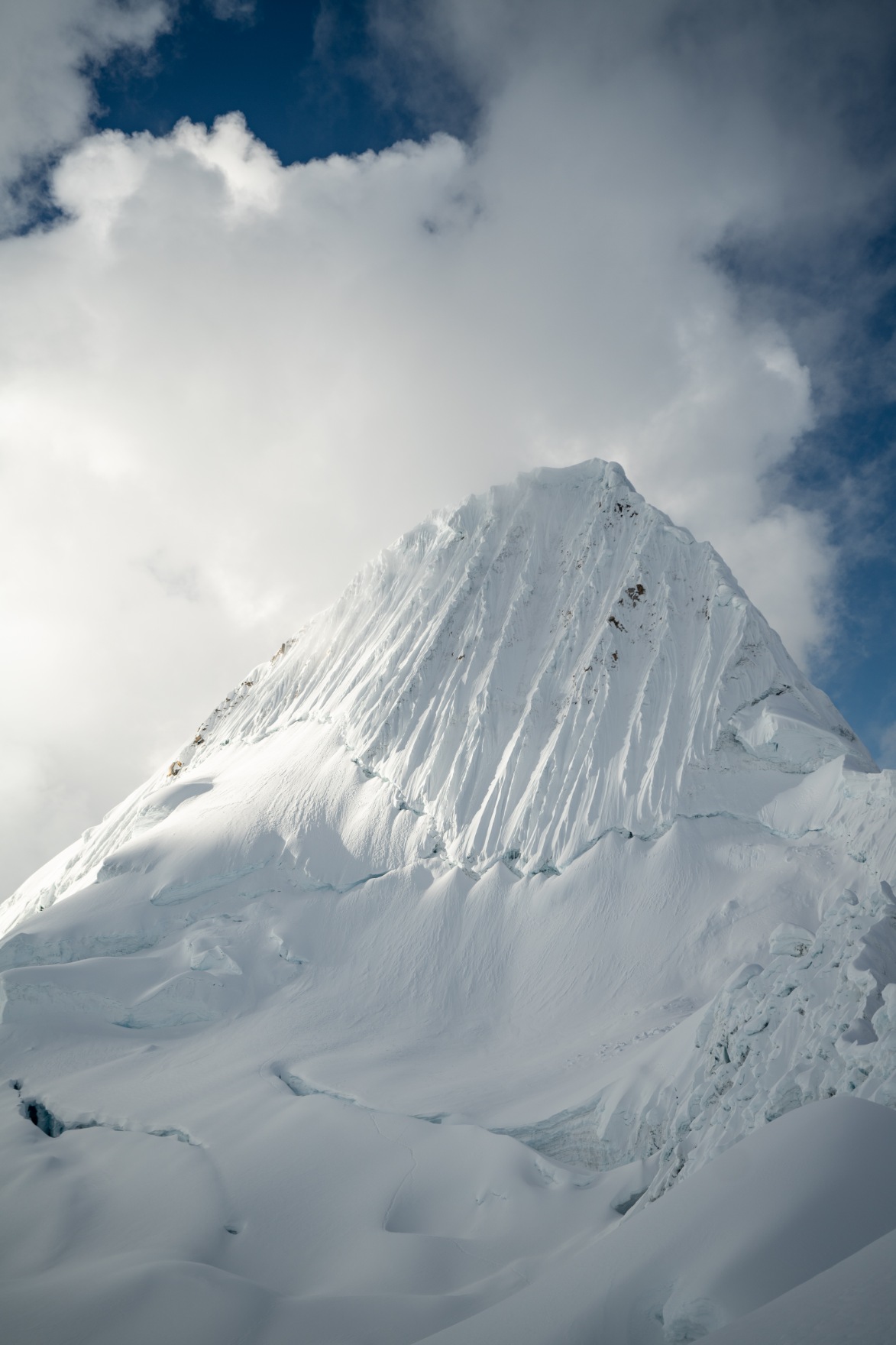
Alpamayo & Quitaraju Expedition
The Alpenglow Approach has been developed over the past two decades, and our expertise in Peru means the best experience possible on Alpamayo & Quitaraju.
- Certified and Professional Guides
- High End Transport and Lodging
- Quality Logistics and Mountain Infrastructure
- Portering and Fresh Food
- Vetted, Experienced climbing partners
- Office Team Support
- June 28, 2026 – July 12, 2026
- June 27, 2027 – July 11, 2027
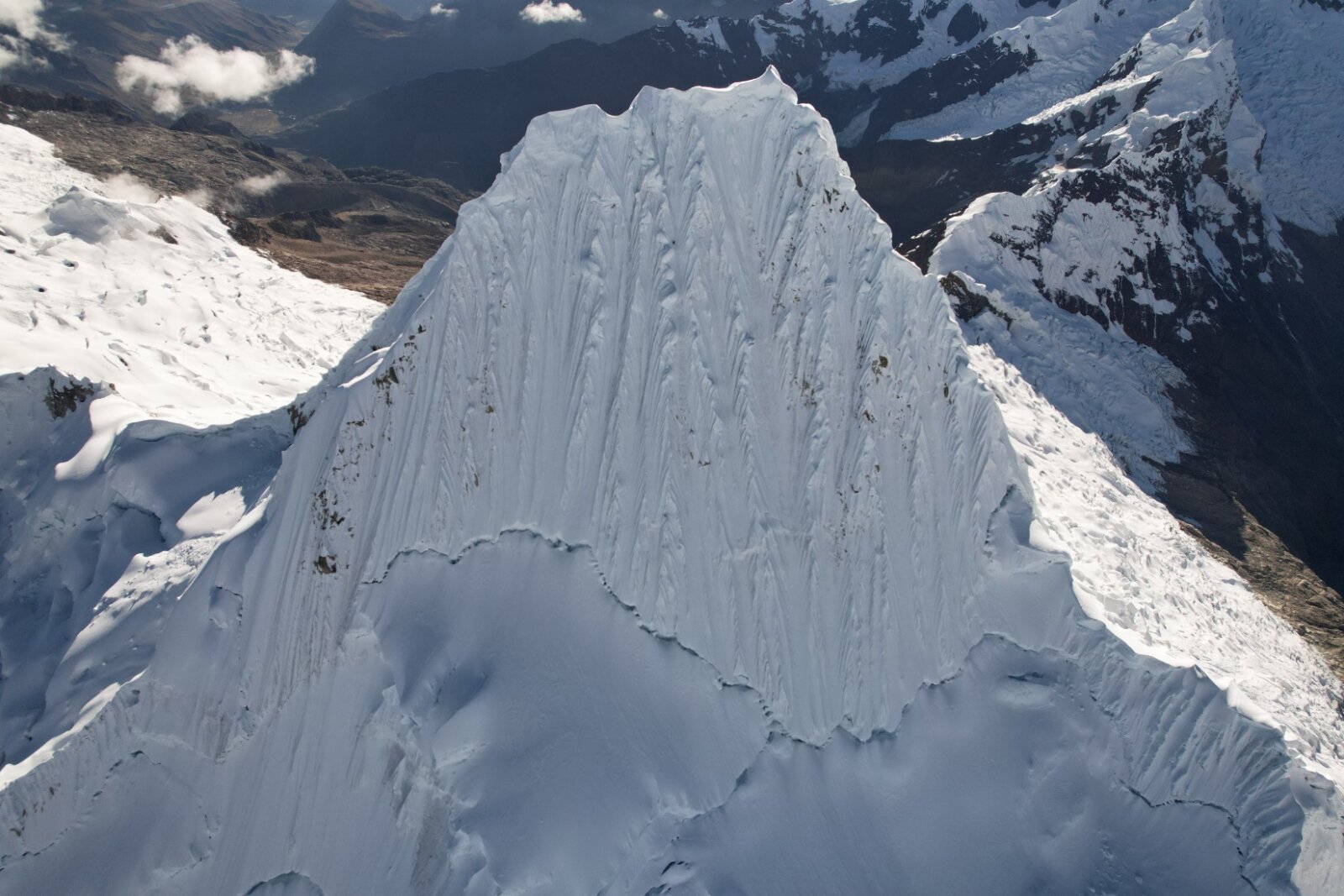
Climb the Most Beautiful Mountain on the Planet.
Alpamayo is the ideal mountain to put your advanced alpine skills to the test, combining the challenges of climbing at altitude with steep ice and snow climbing. Many fledgling high-altitude climbers consider this peak a culmination of their early climbing careers. It has often been named by climbers, magazines, and trekkers as “the most beautiful mountain in the world.”
The Approach
Before tooling your way up the fluted Southwest Face, we will approach over 15 miles (25km) to base camp. The Trek into base camp is incredibly beautiful, and we’ll have all of our equipment and gear portered in so that we can save our strength for the climb. Once in base camp, the next move will be to Moraine camp and then the climb to Col Camp. The climb to Col camp boasts two-three pitches of WI3 climbing, all while carrying a heavy pack. It’s a hard day, but will be a rewarding one as we’ll finally lay eyes on the face that we’ll be climbing.
Climb Alpamayo
Alpamayo is the perfect place to integrate light alpine climbing techniques into your bag of tricks. With a long base camp approach and up to 10 pitches of technical snow and ice climbing, it is ideal for combining previous high altitude climbing experience with steep ice climbing skills. When you leave Alpamayo you should feel ready to be a competent team-member on big alpine peaks around the world.
Climb Quitaraju
Col Camp on Alpamayo is the perfect jumping-off point to attempt a bonus peak, the magnificent Quitaraju (19,820’/6,041m). Boasting a sustained two-tool route composed of hard ice and neve (styrofoam-like snow), Quitaraju is not as steep as Alpamayo, but the route is notably longer, extending roughly 12 pitches from the base of the route to the summit. After climbing Alpamayo, teams will be sufficiently prepared to tackle Quitaraju in style.
The Alpenglow Difference
Certified and Professional Guides
Alpenglow’s Alpamayo Expedition will be guided by one or more of Alpenglow’s AMGA/IFMGA certified lead guides. AMGA/IFMGA (American Mountain Guides Association / International Federation of Mountain Guides Association) certification is the highest possible training available to guides, and only the most experienced and dedicated attain it. Our lead guides have all traveled and climbed extensively in South America and know the Peruvian Andes intimately. Their knowledge of Andean culture as well as the mountains, combined with their passion for teaching others to become competent mountaineers, guarantees that your experience will be one to remember! Our small team size and low ratio of climbers to guides (2:1) ensures that you stay healthy and strong, and are able to enjoy each component of your experience.
Quality Logistics and Base Camp Infrastructure
When it comes to climbing in the Cordillera Blanca, quality = success. We provide the highest quality logistics possible in Peru. Comfortable bus tickets for the drive to Huaraz, porters for all of our gear, professionally trained cooks and fresh food, hangout/dining tents for base camp; you’ll find that our base camp set up is designed to set you up for success as best it can be.
FITNESS
TECHNICAL
ALTITUDE
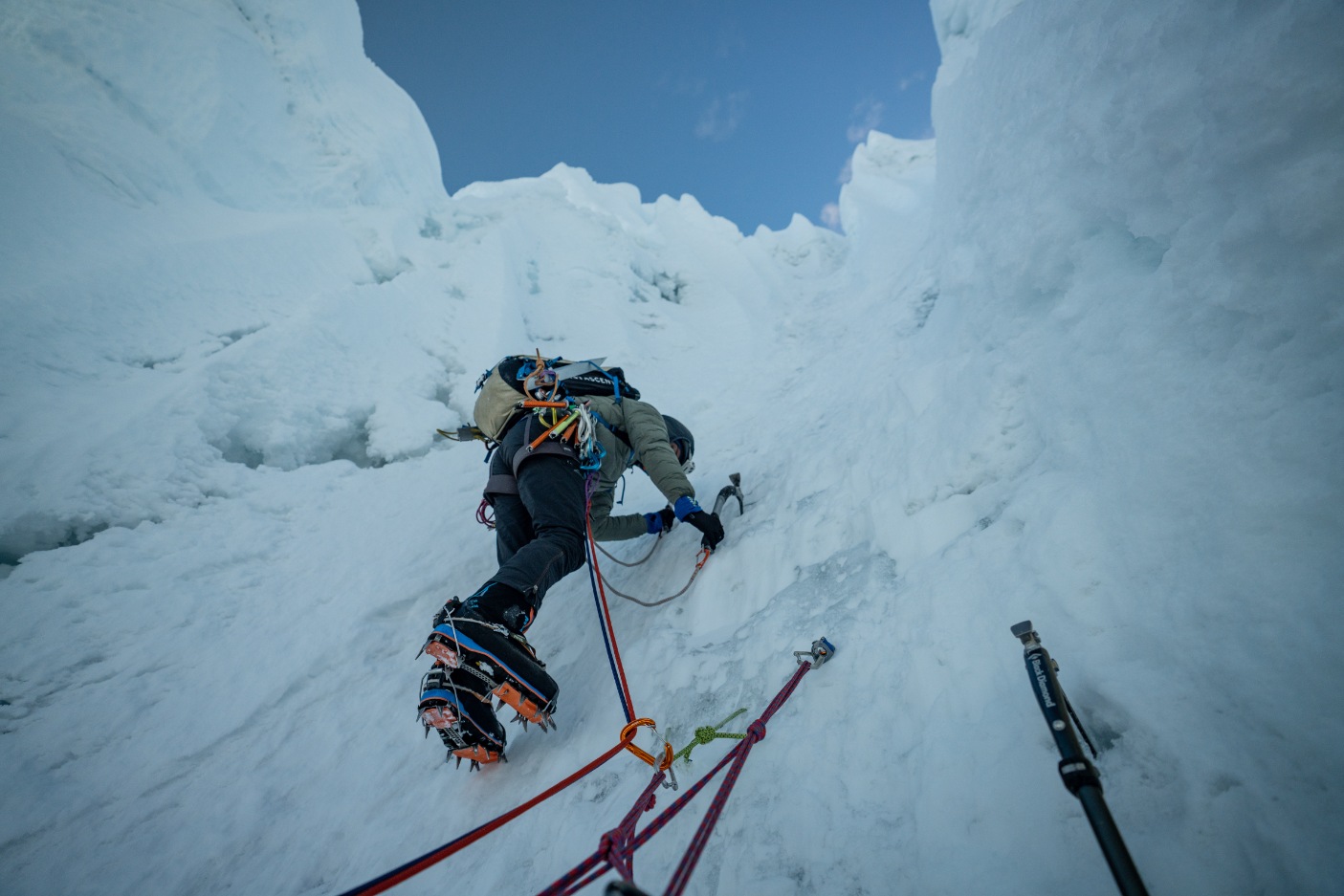
Alpamayo & Quitaraju Expedition Itinerary
- Day 1
- Arrival
Arriving in Lima between 6pm and 12am, clients will be transported to their hotel for a good night’s sleep before departing for Huaraz the next day.
- Day 2
- Drive to Huaraz
Welcome to Huaraz, the climbing capital of South America! After an 8-hour bus ride from Lima, we will arrive at the small, beautiful Olaza Hotel where we will rest and regroup.
- Day 3
- Acclimate and Organize
Organize and acclimatize! We’ll spend this day going over gear and logistics for our expedition, making sure that everyone is ready to spend the next several days at altitude. Additionally, we’ll do our first acclimatization hike to a nearby high-altitude lake.
- Day 4
- Drive and Hike
From Huaraz, we drive 3 hours through the farming communities nestled between the spines of the Cordillera Negra and the Cordillera Blanca to the trailhead in the village of Cashapampa. From there, we’ll organize our burros and hike to Llama Corral (11,500’/3,505m) to camp for the night.
- Day 5
- Establish Base Camp
We will continue to trek past the Santa Cruz lakes until reaching the hanging valley beneath Alpamayo. At 13,500 ft./ 4,115m, we’ll set up our basecamp just at the edge of the treeline.
- Day 6
- Loads to Moraine Camp
From Base Camp, we will make a run up to Moraine Camp (16,000’/4,877’) to stash equipment for our ascent. Upon our return to Base Camp, we’ll fresh, clean food provided by our local logistics operators.
- Day 7
- Rest Day
Rest Day in Base Camp. Today we will review advanced rope skills and prepare our gear for the climb.
- Day 8
- Move to Moraine Camp
Move to Moraine Camp.
- Day 9
- Move to Col Camp
Today, we move onto the glacier and climb to Col Camp (18,000’/5486m). This is often one of the more challenging days of the expedition, as we will be crossing the broken glacier and climbing up to three two-tool snow and neve pitches with full packs. Col Camp boasts some of the best views of any high camp in the world.
- Day 10
- Summit Alpamayo
If the team is feeling strong and well-acclimatized, we will attempt the summit of Alpamayo (19,512’/5,947m). The summit route has a 1-2 hr approach before crossing the bergschrund onto the SW Face. From there we will either attempt the French Direct Route or the Ferrari Route on 55-70 degree snow and ice, before a final knife-edge ridge traverse takes us to the top. We return to high camp by rappelling off the summit.
- Day 11
- Rest Day
Rest Day in Col Camp.
- Day 12
- Summit Quitaraju
If the team is feeling up to it, we will attempt to summit Quitaraju (19, 820’/6,041m) from Col Camp. While not as steep as Alpamayo, the route up the North Face of Quitaraju is considerably longer. After crossing the glacier, 12+ pitches of snow and neve stand between us and the summit.
- Day 13
- Descend to Base Camp
Descent from Col Camp to Base Camp.
- Day 14
- Return to Huaraz
From sunrise in Base Camp, we will ride horses out of the Santa Cruz valley back to Cashapampa. From there, we take a van back to Huaraz for hot showers and celebrations.
- Day 15
- Head back to Lima
Depart for Lima and catch our flights (after 11pm) back home.
Our Alpamayo Guides
Alpamayo & Quitaraju Expedition Equipment List
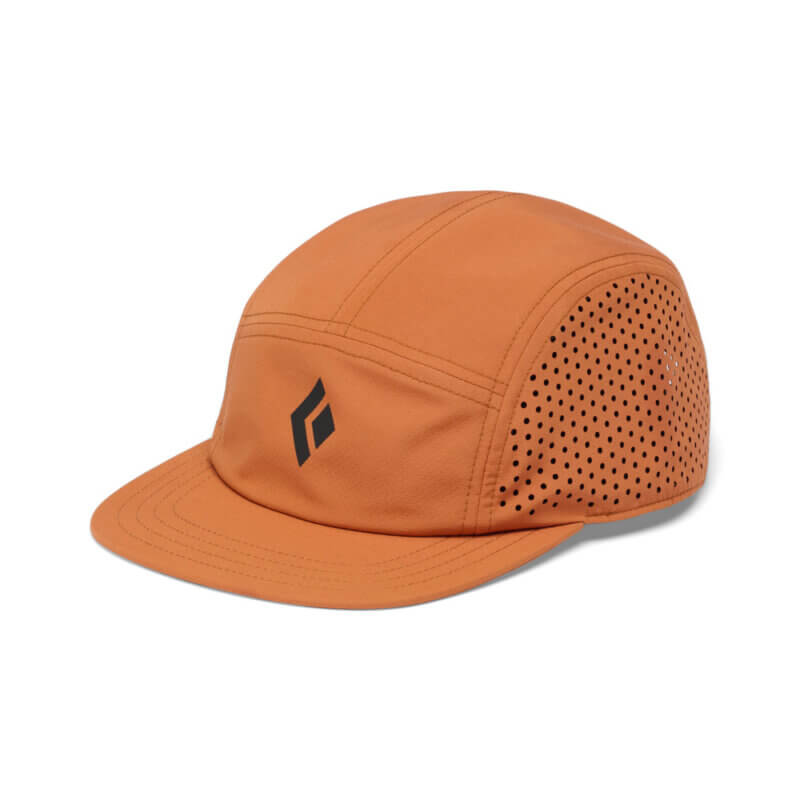 Hat
HatBring your favorite baseball hat for shelter from the sun. No white under the brim – the reflection off of it from the sun is blinding.
Recommended: Black Diamond 5-Panel Synthetic Cap
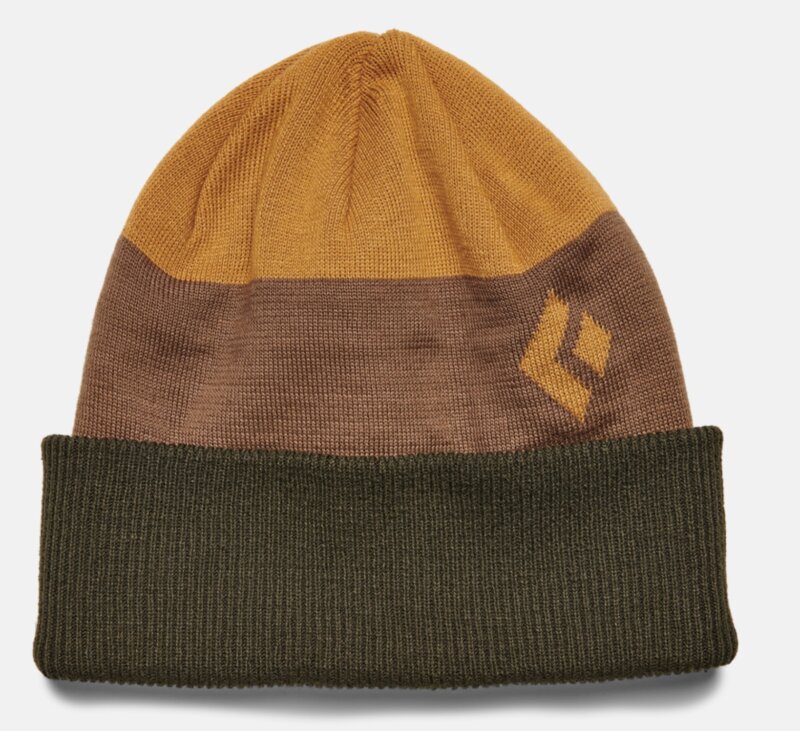 Beanie
BeanieA comfortable, warm well-fitting hat that covers your ears. Make sure that one of your hats fits under a helmet.
Recommended: Black Diamond Levels Beanie
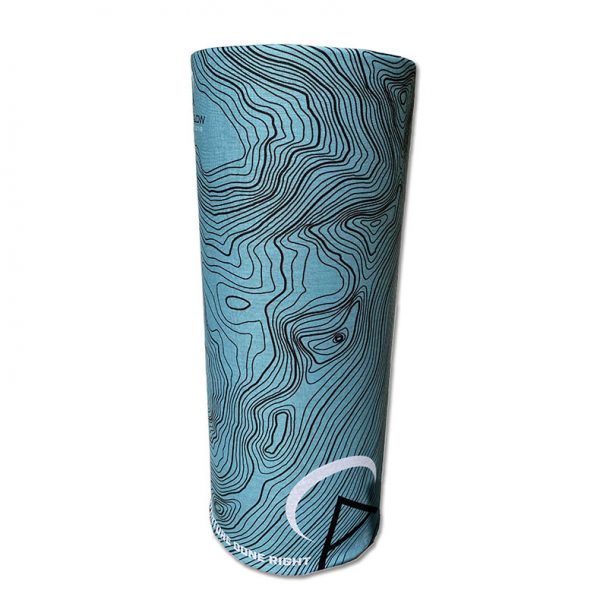 Neck Gaiter (Buff)
Neck Gaiter (Buff)A multi-purpose neck gator that can also be worn under your hat. Make sure that it covers as much skin as possible and yet is still comfy.
Recommended: Alpenglow Buff
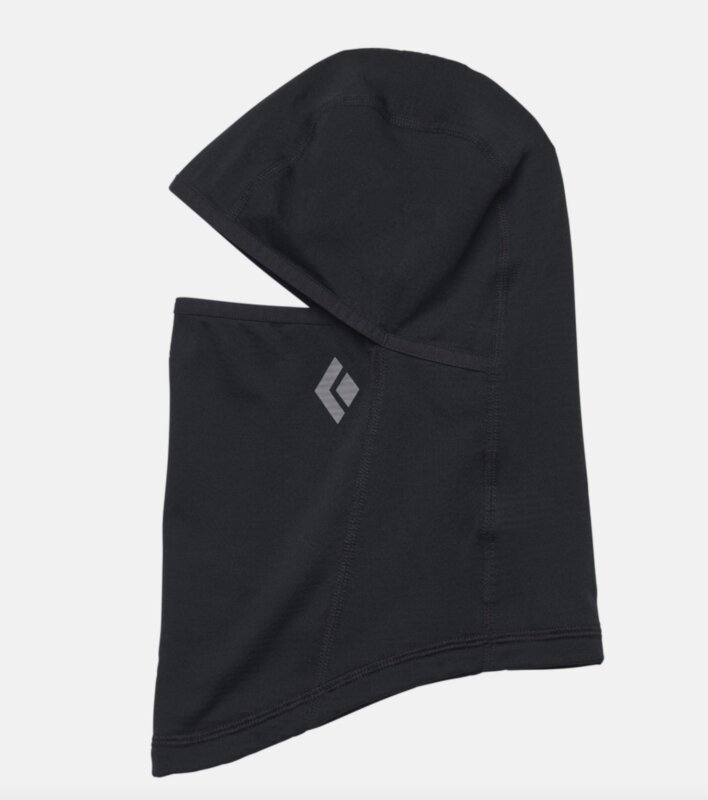 Balaclava
BalaclavaWe recommend a tight-fitting balaclava that is worn under your hat. Make sure that it covers as much skin as possible, but is comfortable enough to wear for hours.
Recommended: Black Diamond Coefficient LT Balaclava
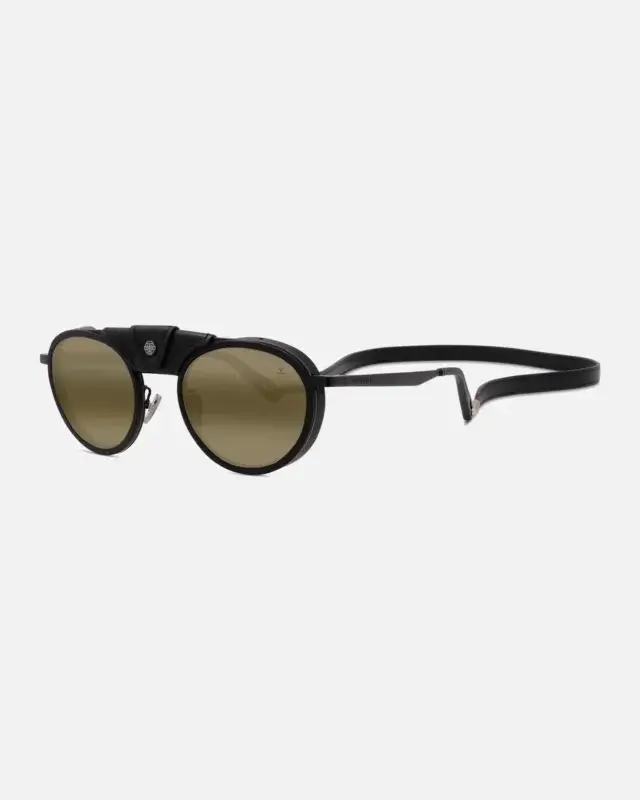 Sunglasses
SunglassesMust have dark lenses. Minimal light should come in below, above, or around the sides of the lenses.“Wrap” style is best. Ventilation is important and a retainer strap is very useful (Chums or Croakies).
Recommended: Vuarnet Glacier 01
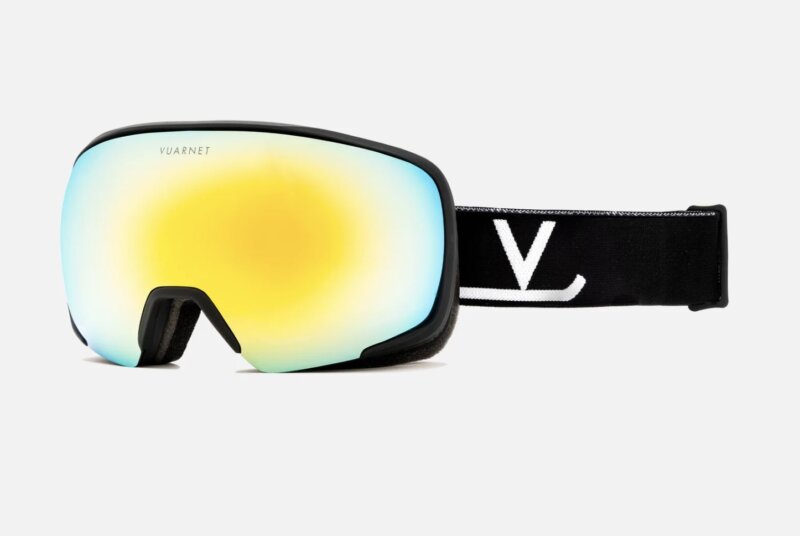 Goggles
GogglesThese will be worn on stormy or windy days. Make sure you are getting a snug fit with lenses for bright sun. Ventilation and anti-fog features are desired.
Recommended: Vuarnet Everest Goggles
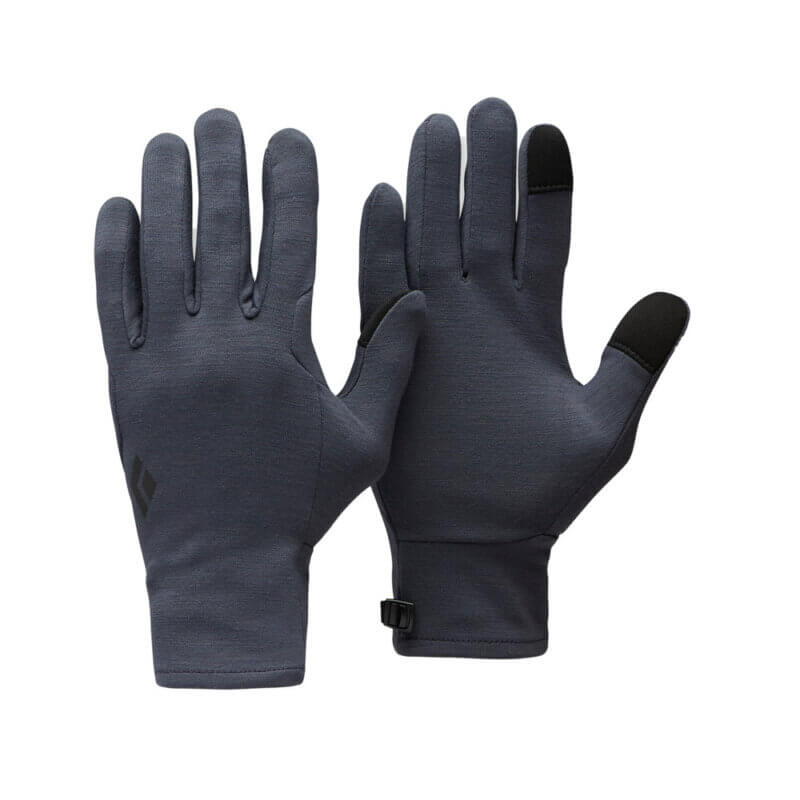 Liner Gloves
Liner GlovesThese gloves keep the inside of your mitts or other gloves from accumulating sweat on the inside and turning inside out when you take them off, as well as provide additional insulation.
Recommended: Black Diamond Midweight Wool Liners
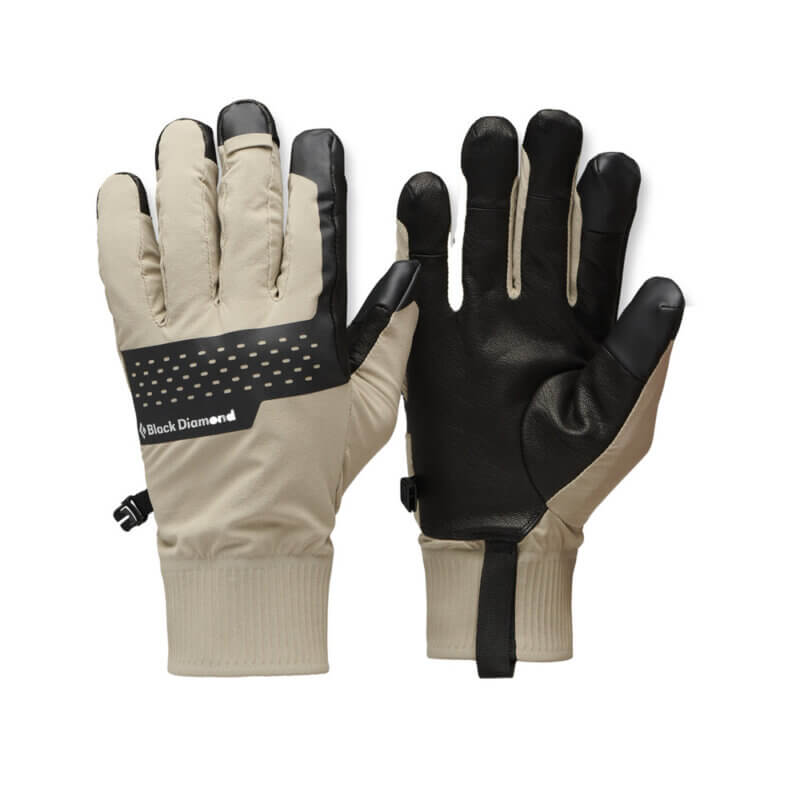 Lightweight Gloves
Lightweight GlovesAll-around gloves for mountaineering, backcountry skiing, and hiking. These gloves (and similar options) are warm, wind-resistant, durable and have a sure grip. You will rarely take these gloves off. They should be snug-fitting, and have some sort of reinforced palm.
Recommended: Black Diamond Alpine Softshell Gloves
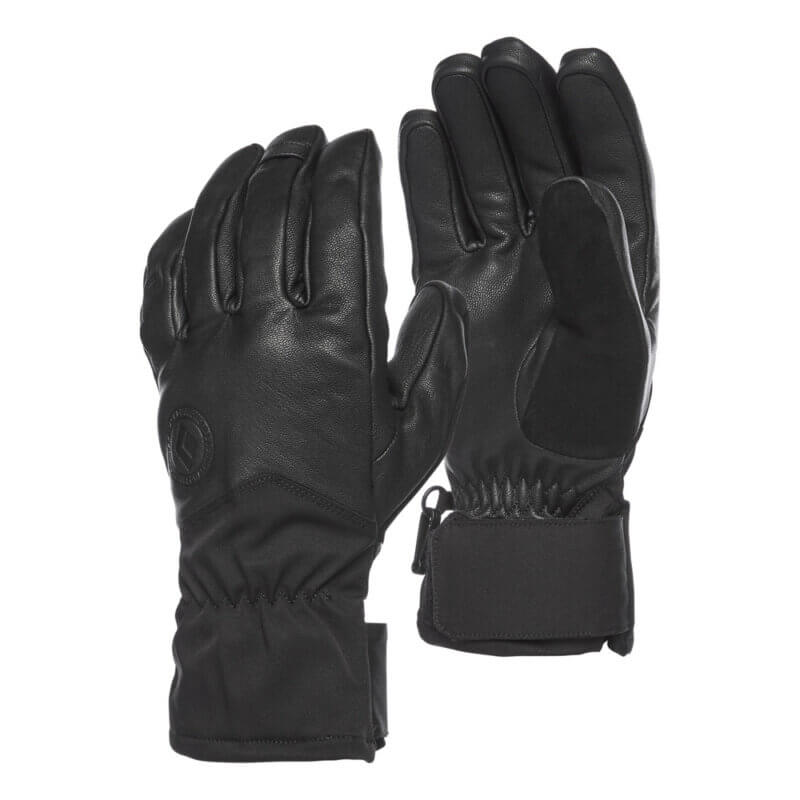 Midweight Gloves
Midweight GlovesThese gloves should be full GORE-TEX®, and insulated. These will be the workhorse glove for any expedition.
Recommend: Black Diamond Tour Gloves
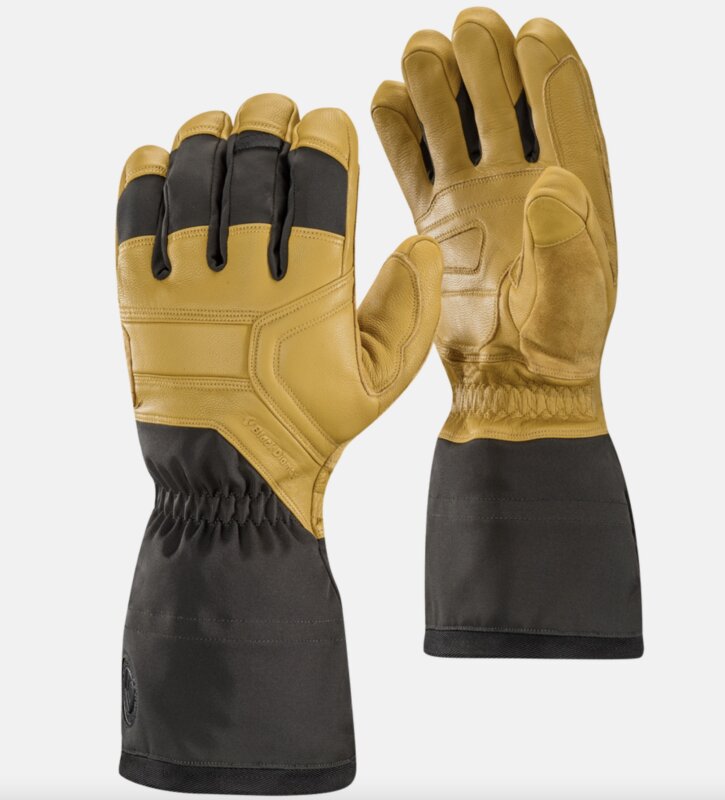 Heavyweight Gloves
Heavyweight GlovesThese gloves should be full GORE-TEX®, with a removable fleece liner (so you can take the liner out and dry it at night). These gloves are used at higher altitudes and are needed to keep your hands dry, and warm. Over the cuff style is desired.
Recommended: Black Diamond Guide Gloves
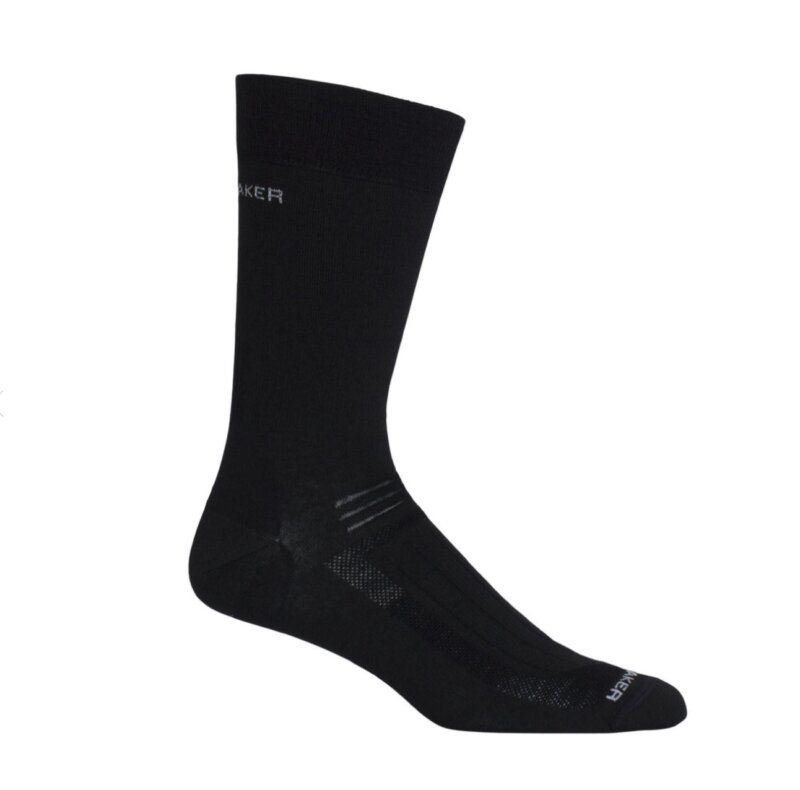 Liner Socks
Liner SocksA super-thin wicking sock that repels moisture. Liner socks help to reduce the likelihood of blisters. The socks should be thin wool, nylon, or Capilene®. NO COTTON
Recommended: Ice Breaker Merino Liner
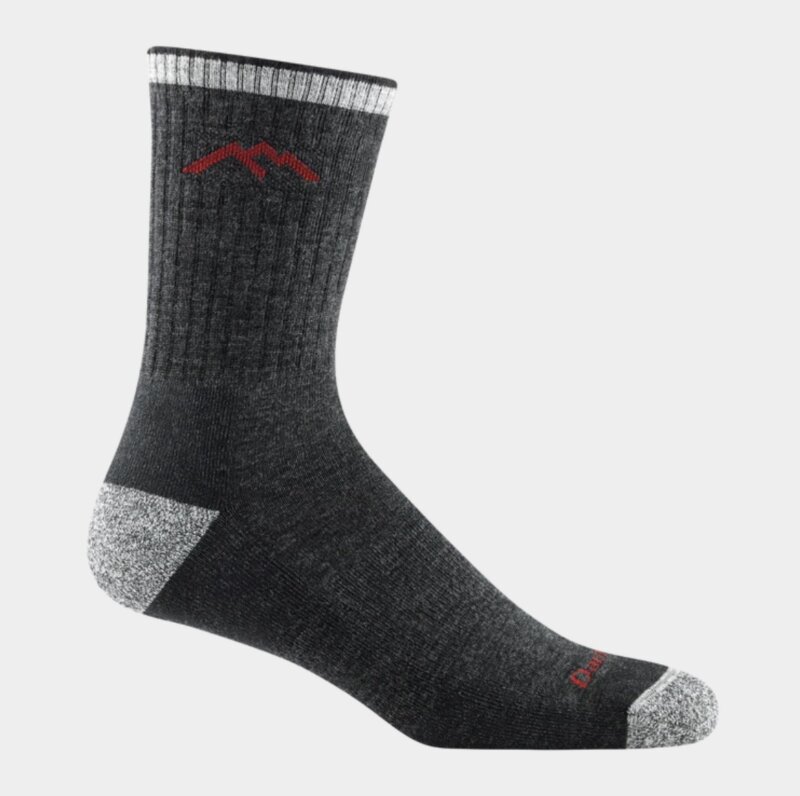 Hiking Socks
Hiking SocksYour everyday sock, good for day hikes, trekking, and in-town. It’s good to bring several pairs of these socks. NO COTTON.
Recommended: Darn Tough Hiking Sock
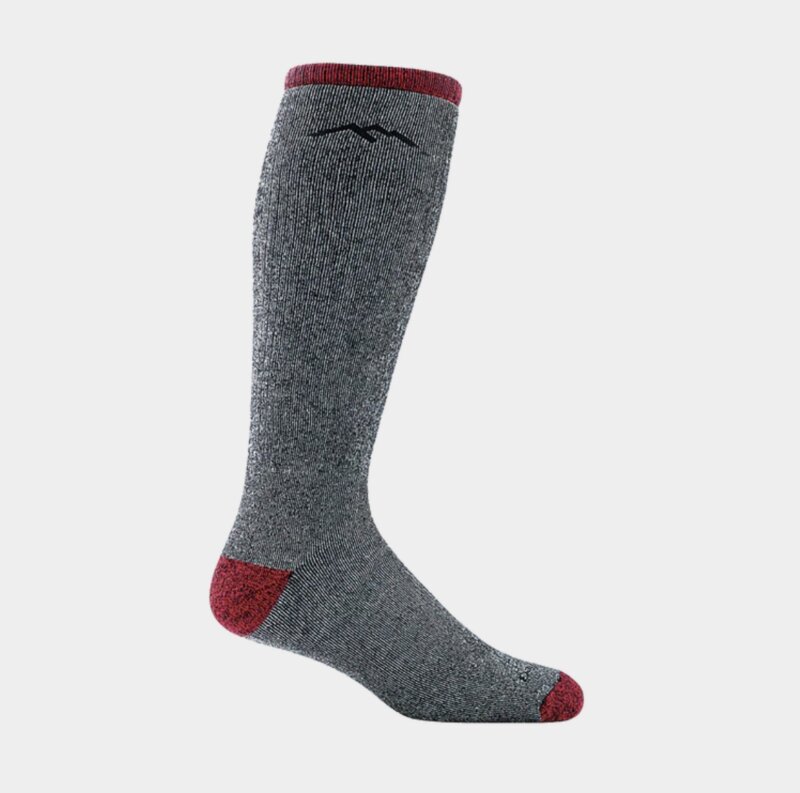 Warm Socks
Warm SocksA wool synthetic blend. Pure rag wool socks are not nearly as effective in wicking moisture or retaining their shape and reducing blisters. Bring a few pairs of these socks. NO COTTON.
Recommended: Darn Tough Mountaineering Sock
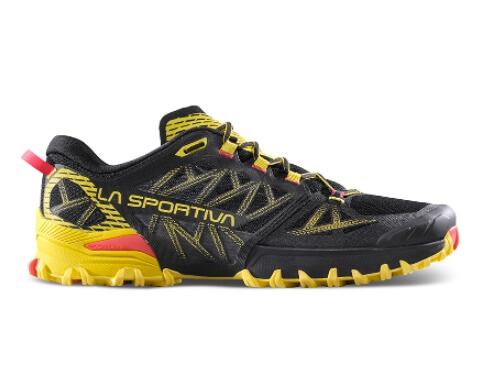 Hiking Shoes
Hiking ShoesThese light to mid-weight shoes are for everyday use. The ideal shoe is comfortable to wear for multiple days and scrambles decently on rock. A Gore-tex lined shoe stays drier when hiking in rain or snow.
Recommended: La Sportiva Bushido
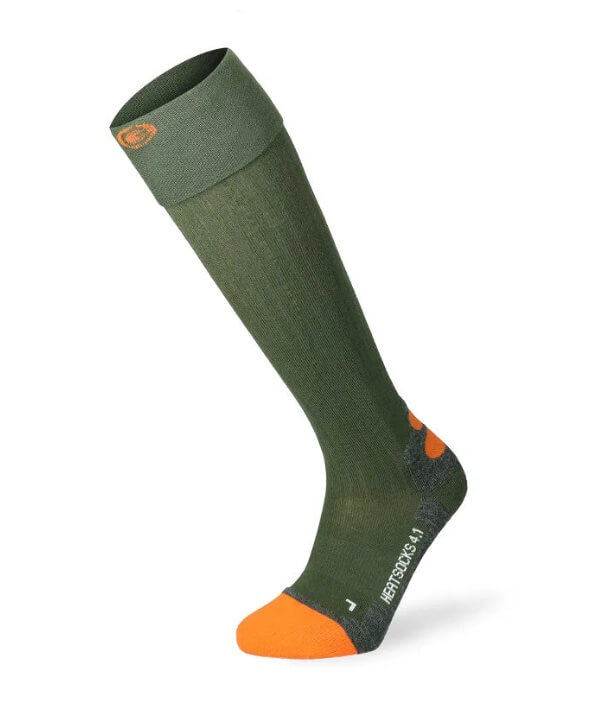 Heated Socks
Heated SocksThese are optional, but highly recommended. Bring 2 sets of batteries. Hotronics boot heaters are another option instead of heated socks, but socks are preferred by our guides.
Recommended: Lenz Heat Socks 4.1 Toe Cap or Sidas SOCK SKI HEAT LV
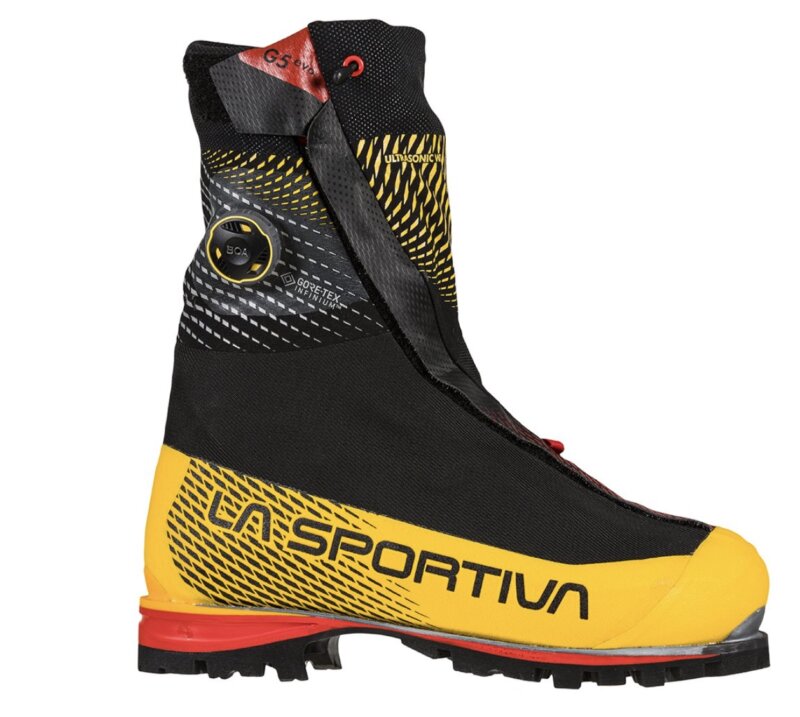 Mountaineering Boots (5,000 – 6,000m)
Mountaineering Boots (5,000 – 6,000m)Should be warm single or double boots that have a stiff sole and accept a step-in crampon. The boots should be comfortable, have adequate wiggle room for your toes, and your heel should not lift more than 1/8th of an inch when walking. (If your feet run cold, we would recommend a double boot like the La Sportiva G2 Evo.) For our Introductory Climbing Schools, we have limited availability and sizes for free boot rentals. If you need rentals, please reach out to the office staff asap to ensure we have your size.
Recommended: La Sportiva G5 Evo
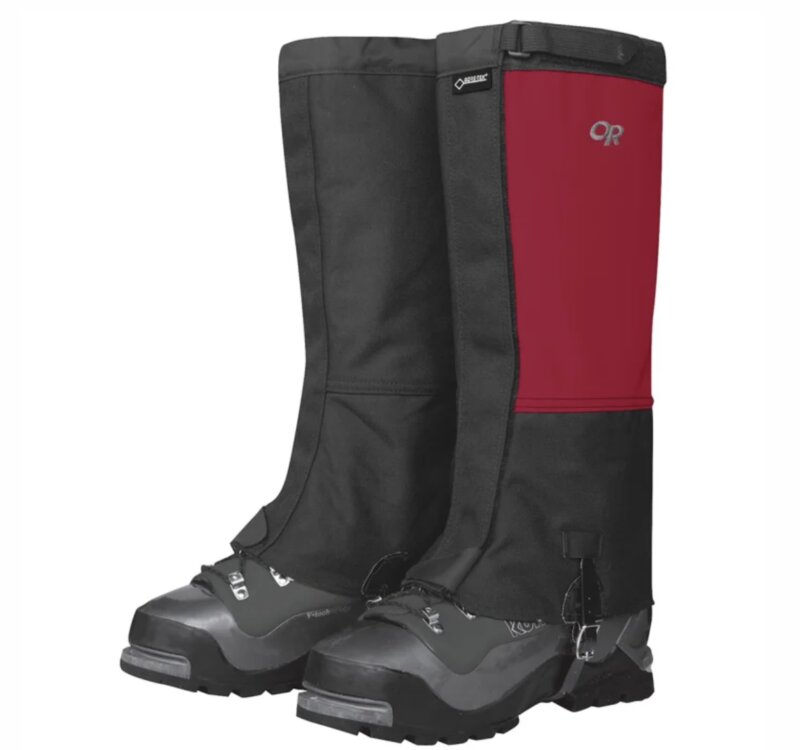 Waterproof Gaiters
Waterproof GaitersGORE-TEX® or Schoeller® calf- high gaiters, insulated supergaiters are recommended. *Gaiters are not necessarily needed if your pants and/or boots have built-in gaiters. However, if your pants have wide leg openings, then you could have issues with crampons snagging your pants.
Recommended: Outdoor Research Expedition Crocodile Gaiters (required if your boots do not have integrated gaiters)
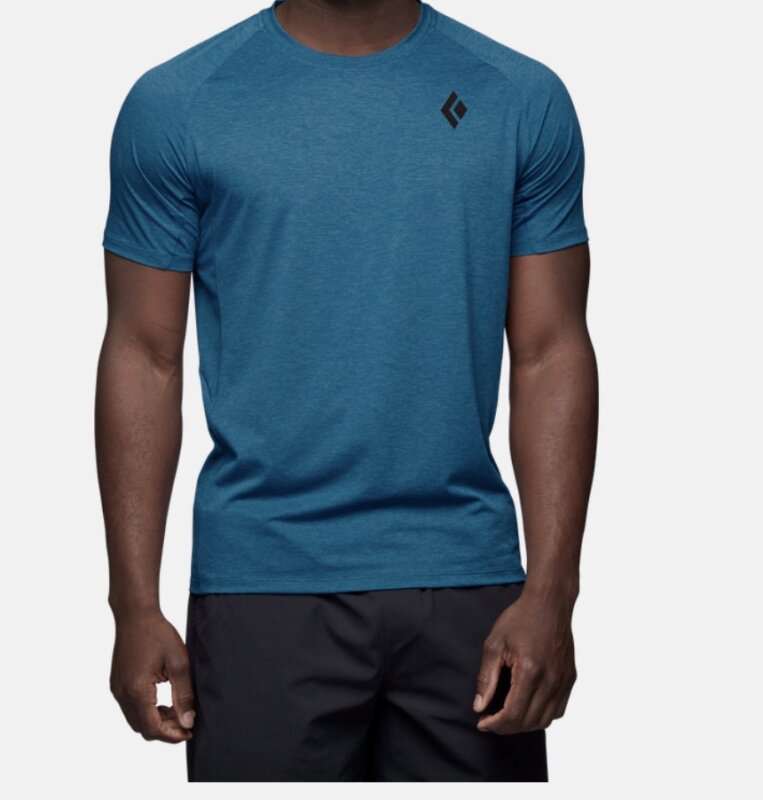 Lightweight Top
Lightweight TopUltra-light base layer that effectively wicks moisture away from your body and is breathable. Quick-dry is important as well. One light-colored shirt is recommended for extremely sunny days.
Recommended Men’s: Black Diamond Lightwire Short Sleeve
Recommended Women’s: Black Diamond Lightwire Short Sleeve
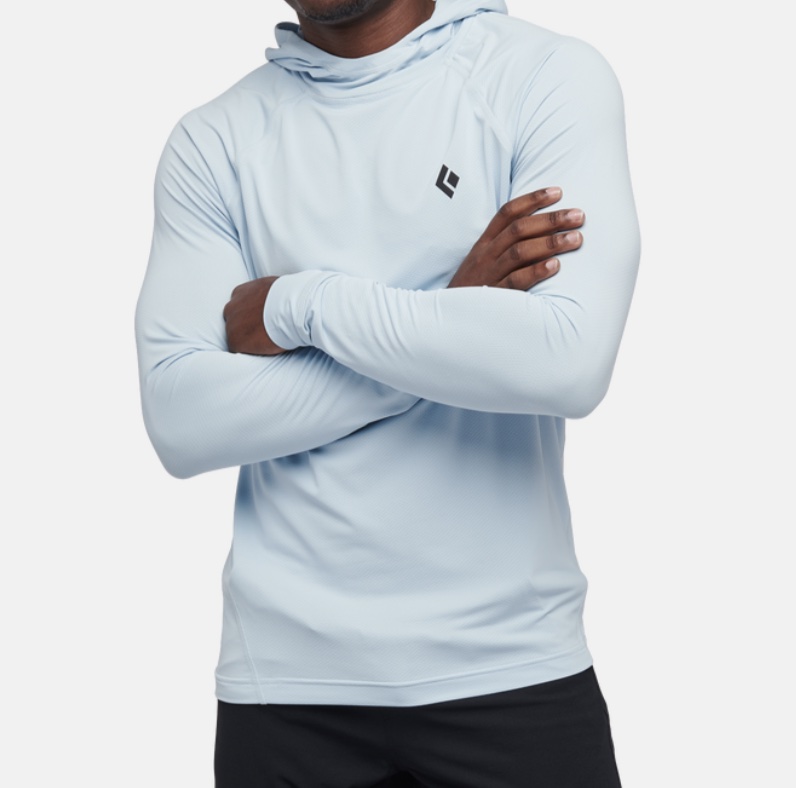 Sun Hoodie
Sun HoodieLightweight, long-sleeve sun hoody that is great for protecting from the sun.
Recommended Men’s: Black Diamond Alpenglow Hoody
Recommended Women’s: Black Diamond Alpenglow Hoody
 Lightweight Baselayer Top
Lightweight Baselayer TopA long sleeve base layer that is fitted, lightweight and quick drying. Make sure it is long enough to tuck in.
Recommended Men’s: Black Diamond Men’s Solution 150 Merino Crew
Recommended Women’s: Black Diamond Women’s Solution 150 Merino Crew
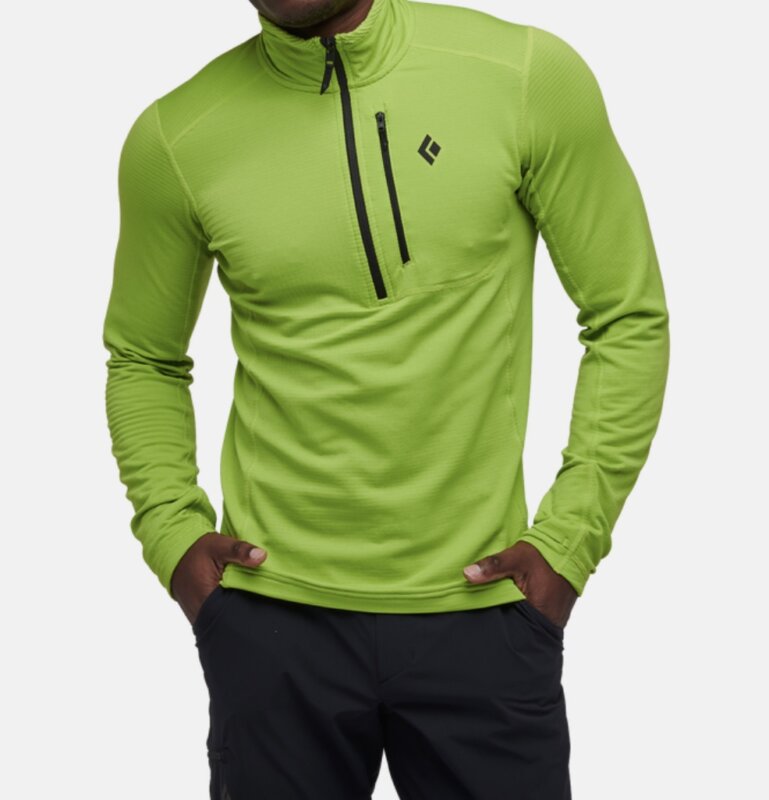 Mid-Weight Warm Layer Top
Mid-Weight Warm Layer TopThis mid-layer will be worn over your base layer most of the trip.
Recommended Men’s: Black Diamond Men’s Coefficient LT Quarter Zip Pullover
Recommended Women’s: Black Diamond Women’s Coefficient LT Quarter Zip Pullover
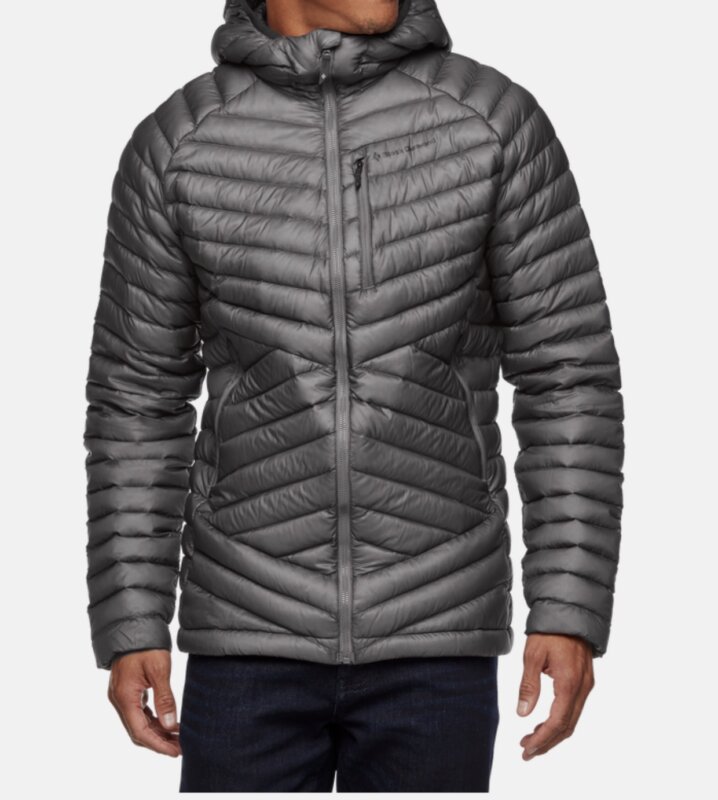 Mid-Weight Puffy Jacket
Mid-Weight Puffy JacketA simple, lightweight puffy jacket. This item is good for layering systems and staying warm. We recommend 800-fill down that is packable and resists inclement weather.
Recommended Men’s: Black Diamond Approach Down Hoody
Recommended Women’s: Black Diamond Approach Down Hoody
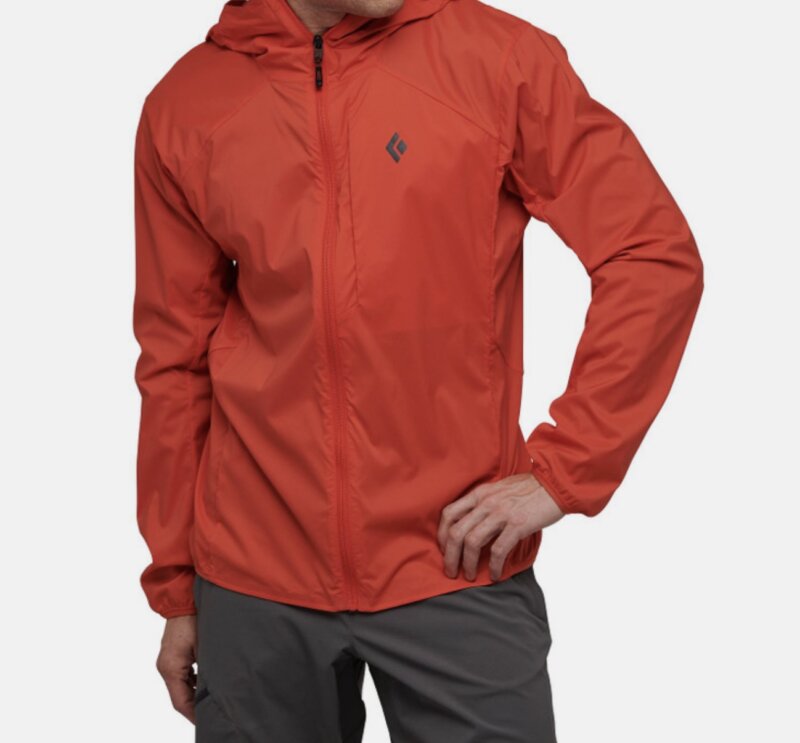 Soft Shell Jacket
Soft Shell JacketMore breathable than Gore-tex, these soft shell jackets block wind and light precipitation and are great as an outer layer and warm layer under your parka.
Men’s Recommended: Black Diamond Alpine Start Hoody
Women’s Recommended: Black Diamond Alpine Start Hoody
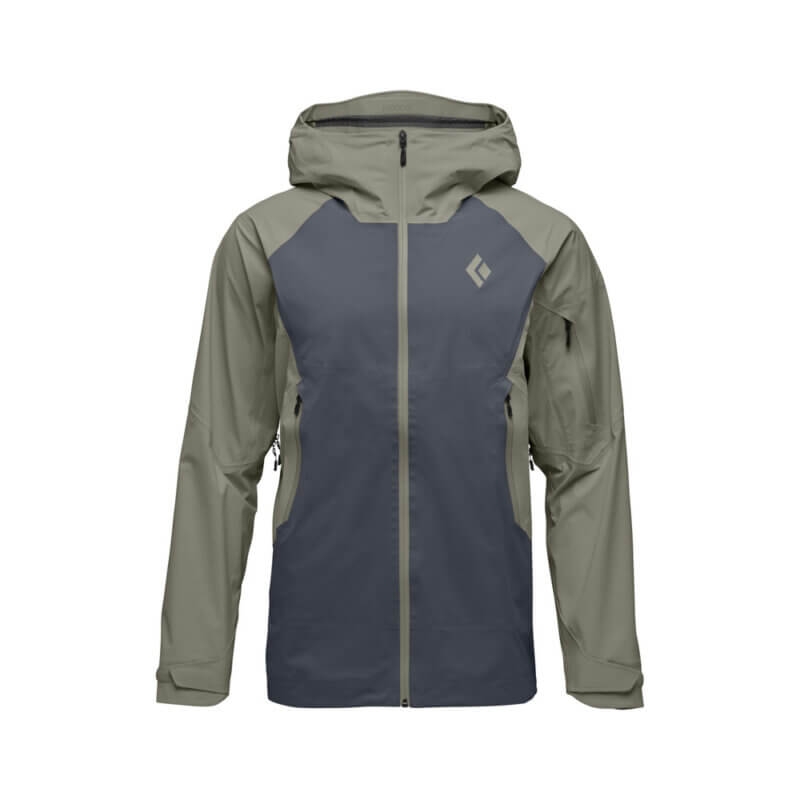 Hard Shell Jacket
Hard Shell JacketA lightweight, waterproof and breathable jacket WITH A HOOD that can withstand extreme weather conditions. Make sure you have pit-zips and if you are using an old jacket, re-waterproof it.
Recommended Men’s: Black Diamond Recon LT Stretch Shell
Recommended Women’s: Black Diamond Women’s Recon LT Stretch Shell
 Down Parka
Down ParkaA puffy jacket with a hood that will keep you warm during the coldest of conditions. The higher the quality down, the better (800-fill is best). Although this jacket should be lightweight, it should have a decent thickness and be closer to the 2 lb. range than your typical mid-weight jacket.
Recommended Men’s: Black Diamond Mission Down Parka
Recommended Women’s: Black Diamond Mission Parka
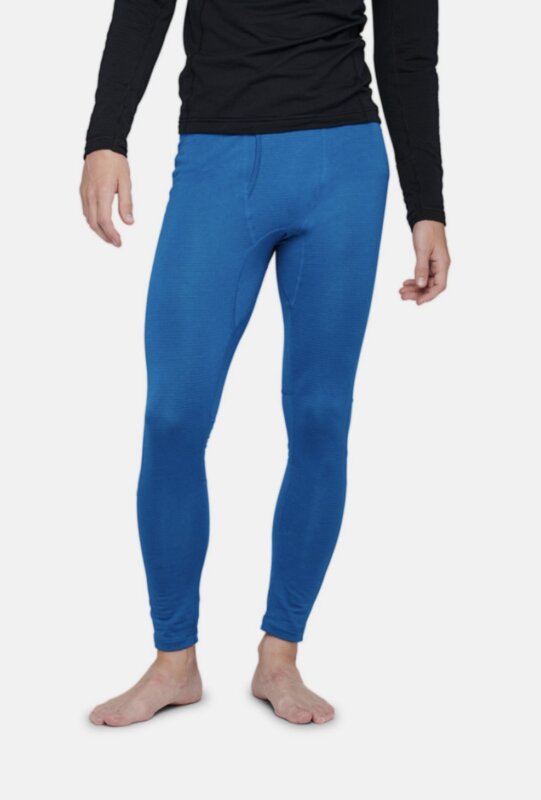 Lightweight Baselayer Bottoms
Lightweight Baselayer BottomsFitted and quick drying. This piece will be a base-layer that will get you through a wide range of temperatures. This can be 3/4 length bottoms if preferred.
Recommended Men’s: Black Diamond Solution 150 Merino Baselayer
Recommended Women’s: Black Diamond Solution 150 Merino Baselayer
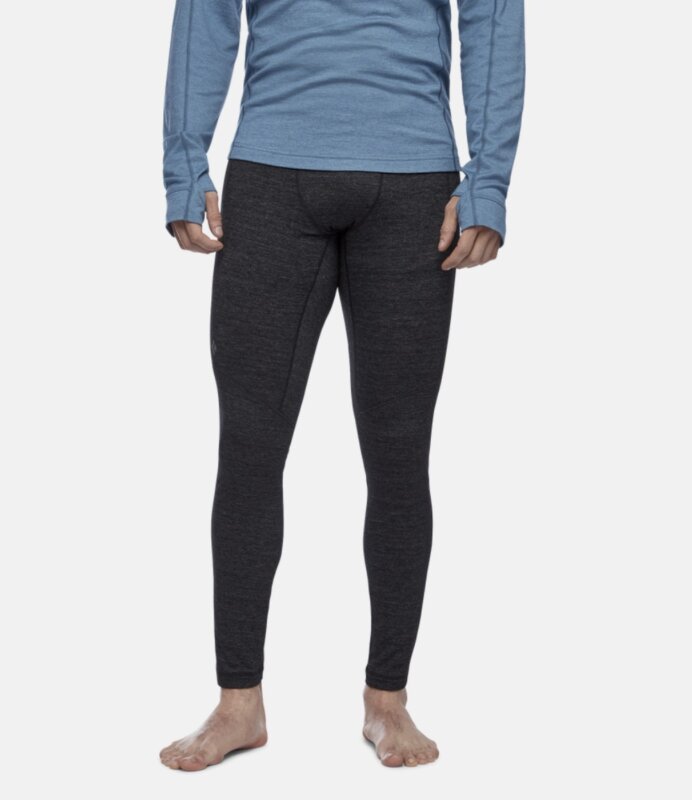 Mid-Weight Baselayer Bottoms
Mid-Weight Baselayer BottomsFitted, mid-weight and quick drying, this baselayer (or midlayer) will be suitable for ski tours to alpine ascents.
Recommended Men’s: Black Diamond Men’s Coefficient LT Pants
Recommended Women’s: Black Diamond Women’s Coefficient LT Pants
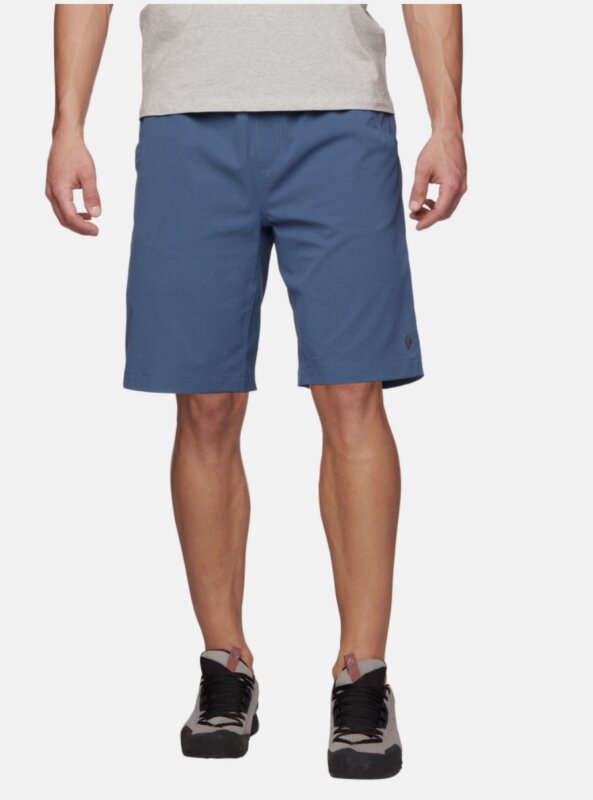 Quick Dry Shorts
Quick Dry ShortsThrow these on under other layers for when the sun begins to beat, or you want to stretch / relax in Basecamp. Lightweight, durable and comfortable. NO COTTON.
Recommended Men’s: Black Diamond Sierra Shorts
Recommended Women’s: Black Diamond Sierra Shorts
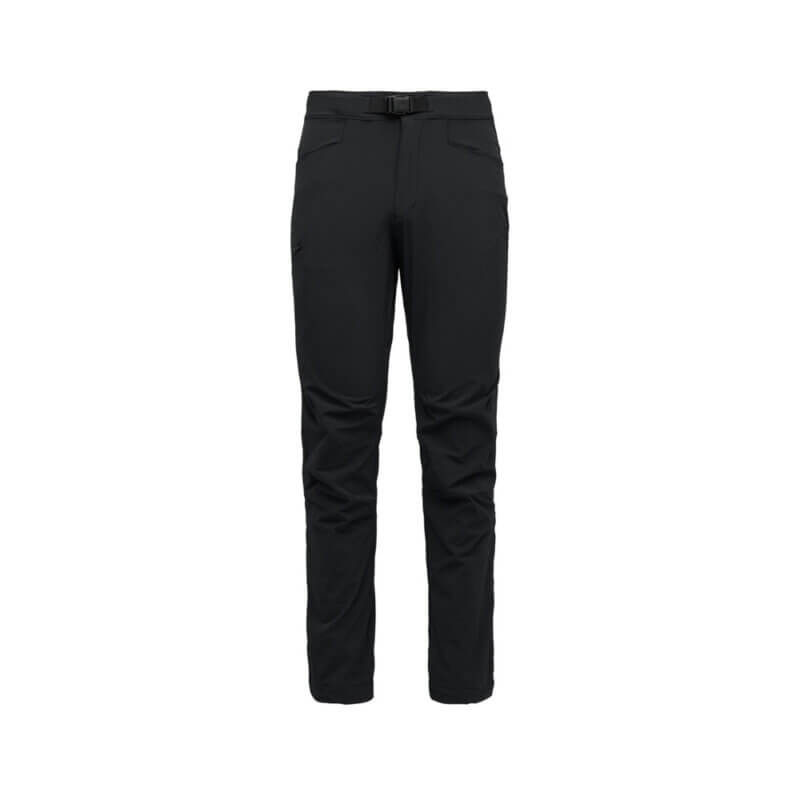 Hiking Pant
Hiking PantLightweight, durable, quick-drying hiking pant that will be your day-to-day pant during the expedition
Men’s Recommended: Black Diamond Alpine Light Pants
Women’s Recommended: Black Diamond Women’s Alpine Light Pants
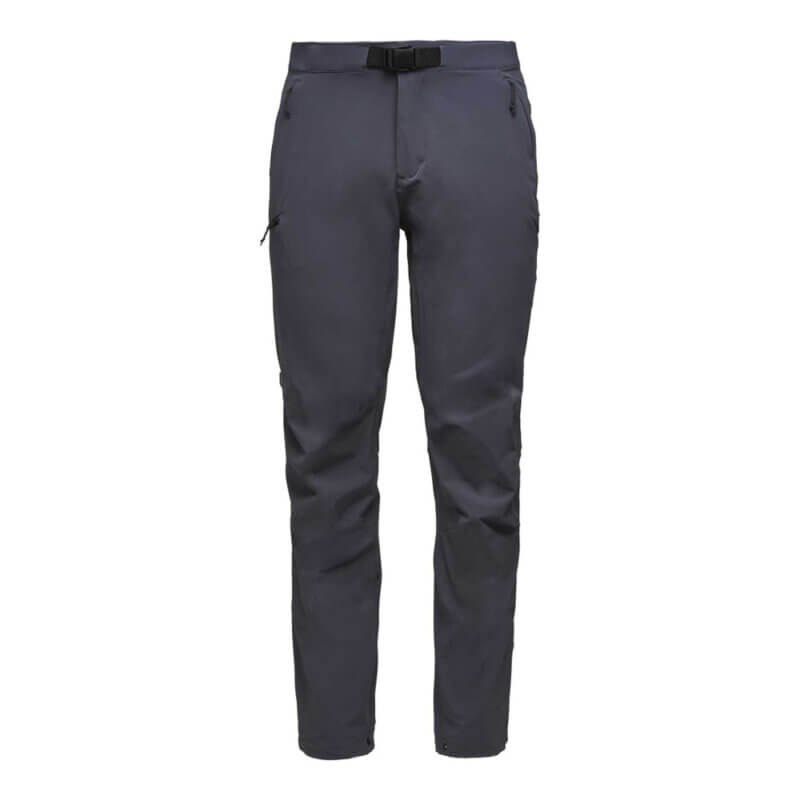 Soft-Shell Alpine Pant
Soft-Shell Alpine PantYou will spend most of your days in these pants. They should be breathable + water-resistant.
Recommended Men’s: Black Diamond Men’s Alpine Pants
Recommended Women’s: Black Diamond Women’s Alpine Pants
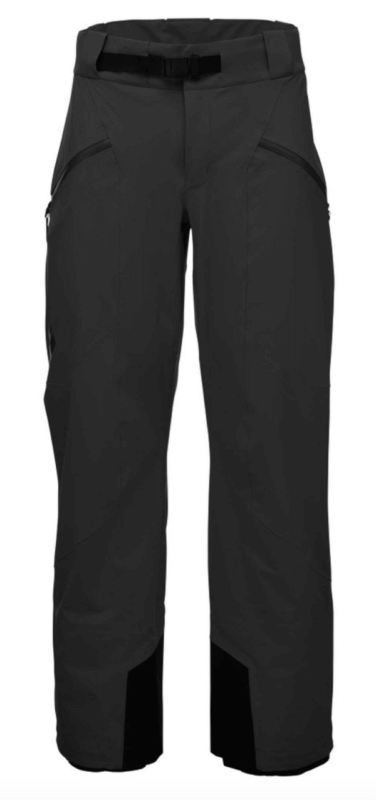 Hard Shell Climbing Pant
Hard Shell Climbing PantYour waterproof bottom layer for extreme weather days. Make sure you have water-resistant zippers, crampon patches + good pockets.
Recommended Men’s: Black Diamond Men’s Fineline Stretch Full Zip Pants
Recommended Women’s: Black Diamond Fineline Stretch Full Zip Pants
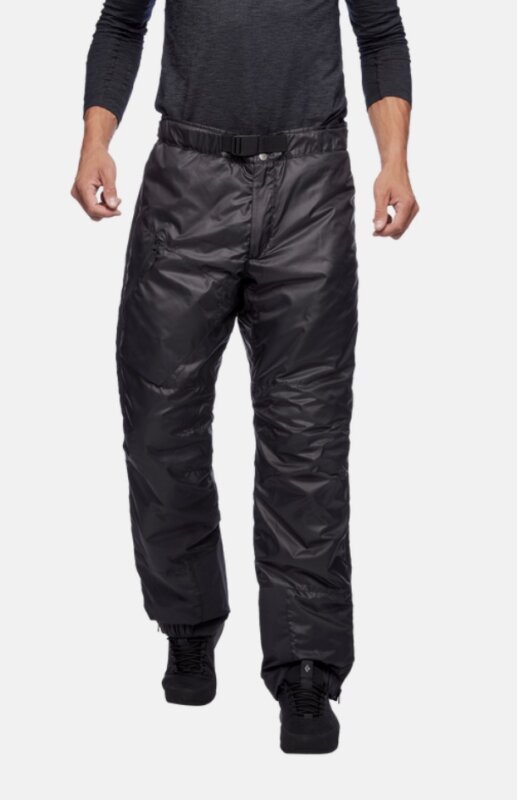 Insulated Pant
Insulated PantFull-length side zippers are recommended, for throwing on top of all of your layers.
Recommended: Black Diamond Belay Pants
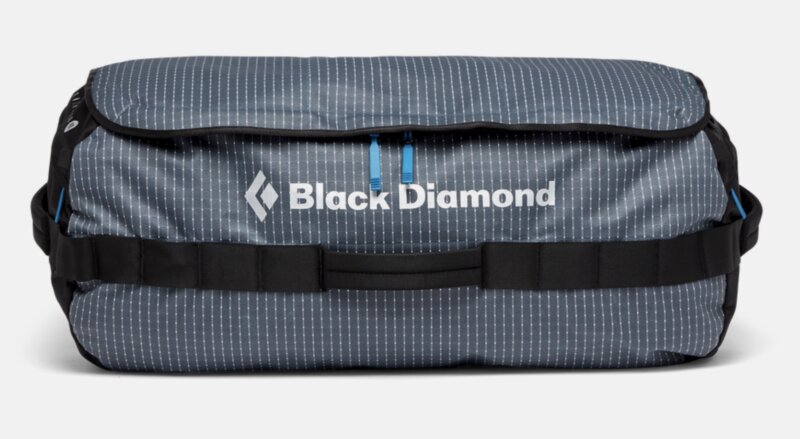 Duffel Bags
Duffel Bags2 Duffel Bags – At least one bag should be extremely durable, waterproof, and big – between 90L and 120L. You should feel comfortable leaving it in a puddle for several hours. Remember dry clothes are hot commodities in the mountains! Large enough to fit everything you own, plus what you anticipate buying. Two duffel bags are necessary to fit all your equipment for travel (we don’t recommend checking your backpack, best is to put all gear and backpack into your duffel). Once in country, you can consolidate your gear into one duffel and your backpack. It’s common to leave the second duffel with city clothes and other non-necessary items behind in a locked and secure location that your guide will arrange for you.
Note: For ski expeditions such as the Ecuador Ring of Fire, you can replace one of these duffel bags with a ski/splitboard bag.
Recommended: Black Diamond Stonehauler 120L
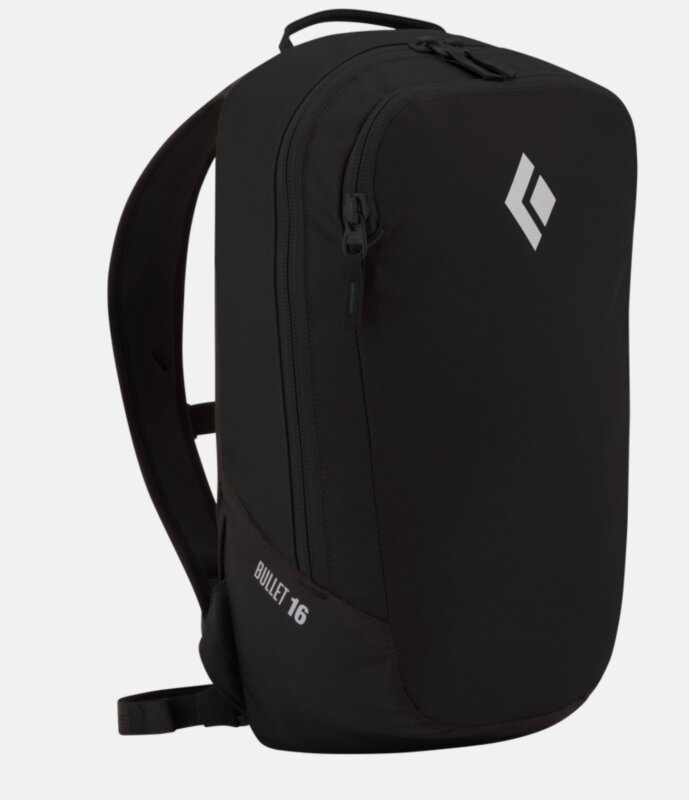 Day Pack
Day PackMid-size pack for city days and trekking. Streamlined, neat and lightweight (10-20 liters).
Recommended: Black Diamond Bullet 16 Pack
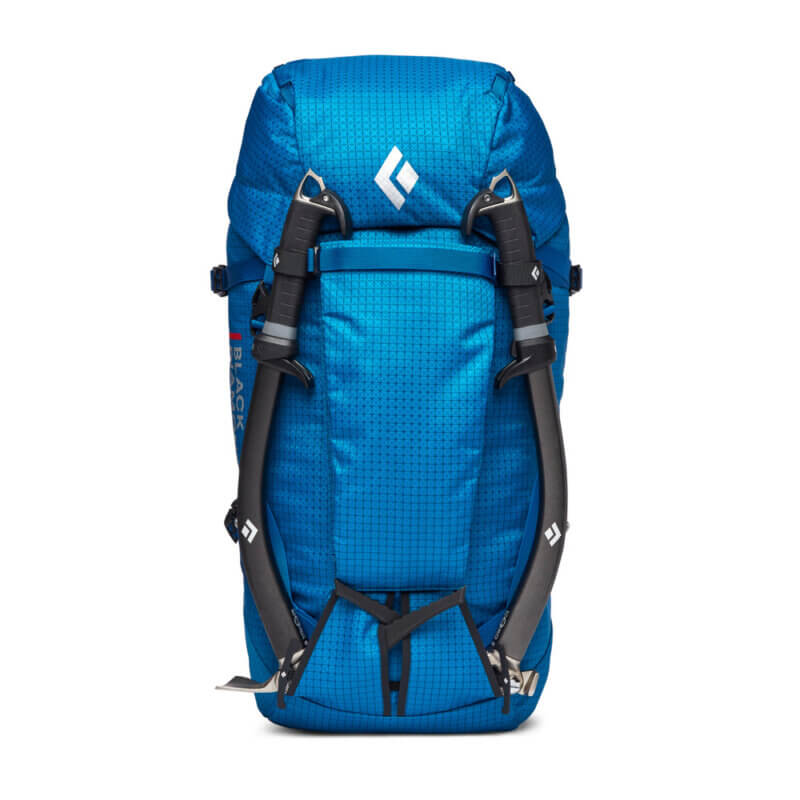 Climbing Pack: 50-60L
Climbing Pack: 50-60LInternal frame pack that is between 50 and 60 liters. Either purchase a matching pack cover, or use garbage bags as liners. Make sure the pack is fitted to YOUR body.
Recommended: Black Diamond Mission 55L Pack
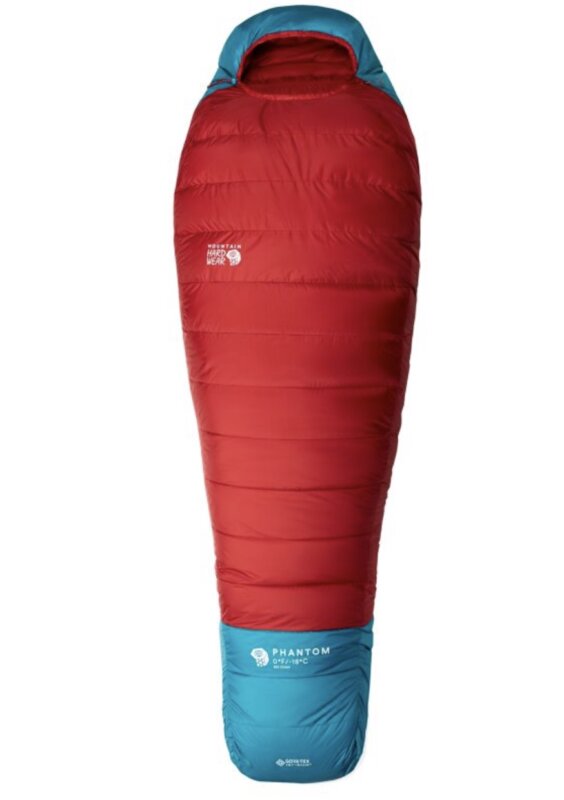 Sleeping Bag (0°F)
Sleeping Bag (0°F)Rated to 0º F. Make certain that the sleeping bag is the right length. DON’T FORGET A COMPRESSION SACK FOR THE SLEEPING BAG. Many climbers also like a silk liner. For the Ecuador Climbing School: If you’re on our 9-Day (non-extension) trip, a 20º F rated bag is ok.
Recommended: Mountain Hardwear Phantom 0°F
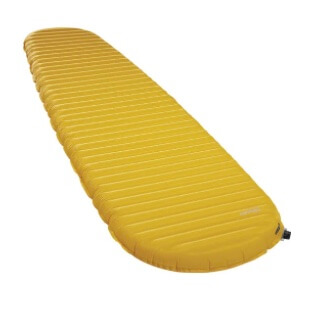 Inflatable Sleeping Pad
Inflatable Sleeping Pad72-inch long inflatable pad required. Make sure you also purchase and bring a repair kit + bag for the sleeping pad.
Recommended: NeoAir® XLite™ NXT Sleeping Pad
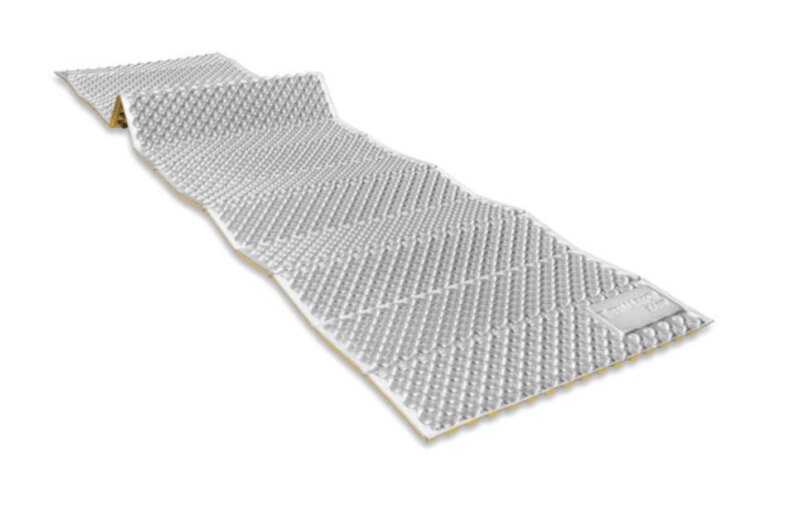 Foam Sleeping Pad
Foam Sleeping PadFoldable foam sleeping pad for sleeping and using as a sit-pad.
Recommended: Thermarest Z-Lite Sleeping pad
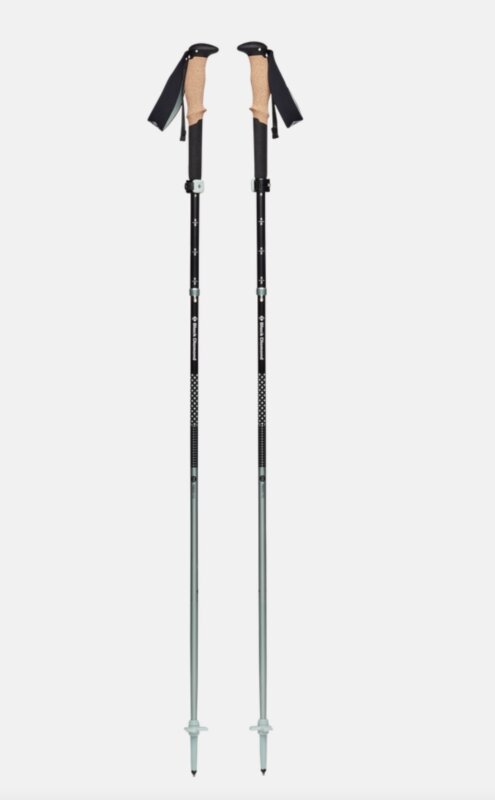 Trekking Poles
Trekking PolesMake sure that they are durable, lightweight + easily adjustable. These are optional, but highly recommended.
Recommended: Black Diamond Pursuit FLZ Trekking Poles
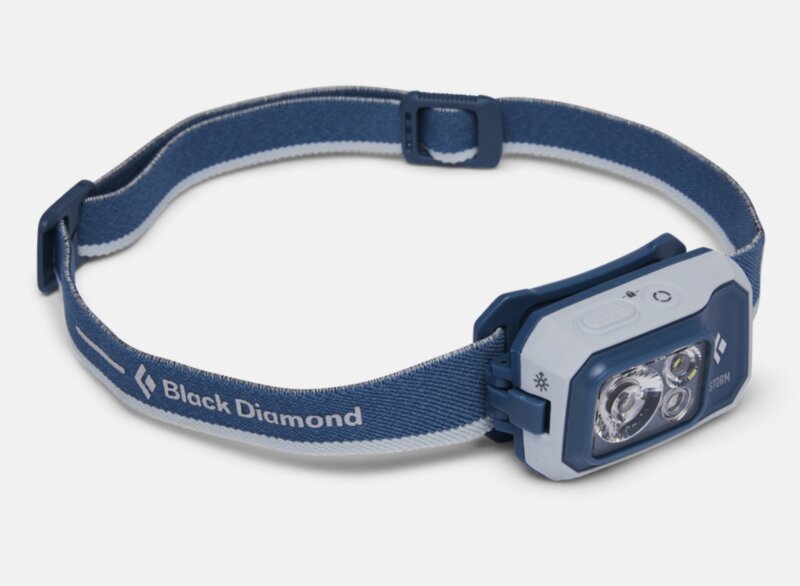 Headlamps
HeadlampsPlease bring two L.E.D. Headlamps. One will be intended as a lightweight backup. L.E.D. headlamps are required. Make sure they have 3+ bulbs. Bring extra batteries. We highly recommend a tilting lamp.
Recommended: Black Diamond Storm 450
Backup Headlamp Recommended: Black Diamond Deploy 325
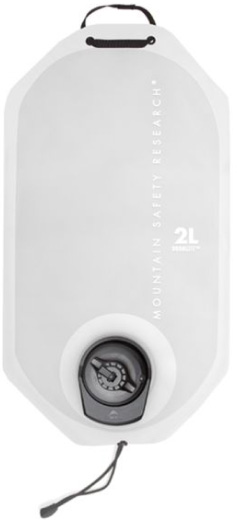 Hydration System
Hydration SystemShould carry 70-100 ounces. Must be durable and have a reliable closure system. Recommended: MSR Dromlite 2L with Hydration Tube
 Two 1L Nalgene Bottles
Two 1L Nalgene BottlesTwo 1 Liter Wide Mouth Nalgene bottles.
Recommended: Nalgene 1 L wide mouth
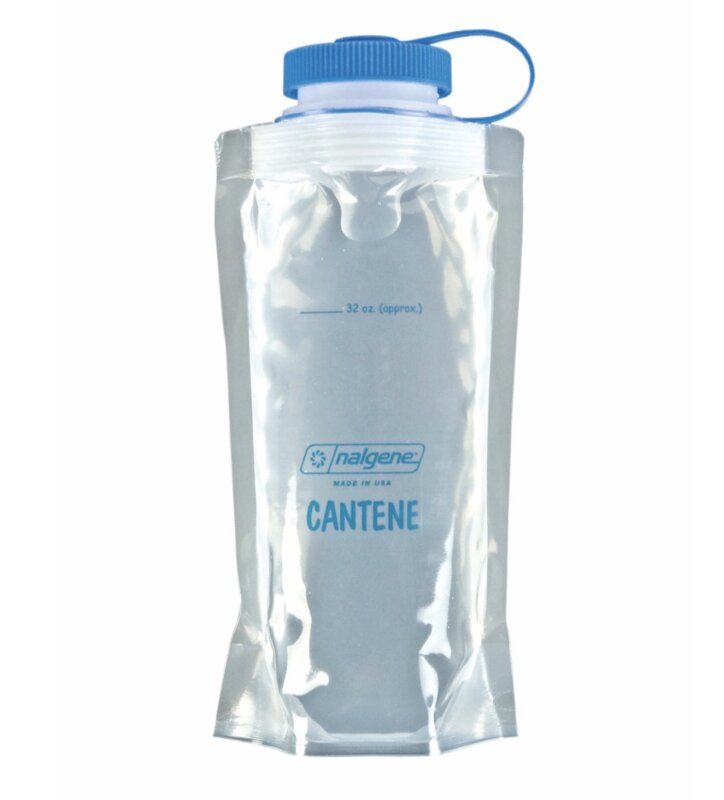 Compressible 1-1.5L Bottle
Compressible 1-1.5L BottleWide mouth compressible 1-1.5 liter bottle. Optional but strongly recommended. Often used as a designated pee bottle.
Recommended: Nalgene Flexible Cantene
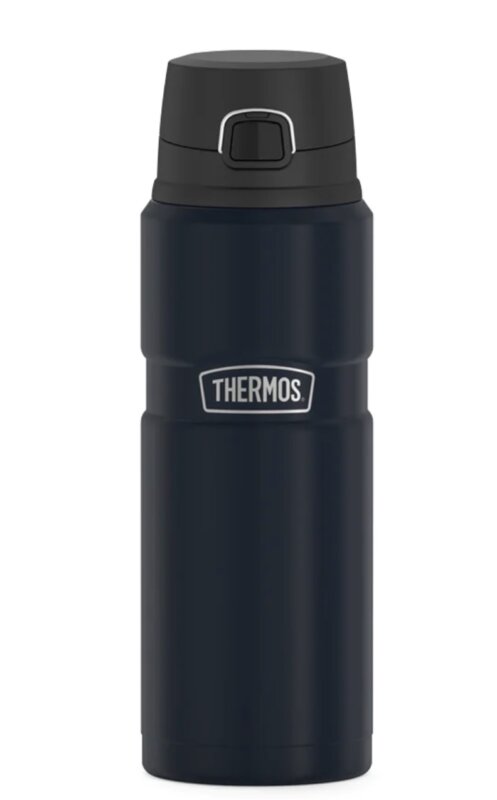 Thermos
ThermosA fully insulated thermos is optional but recommended for warm drinks that help with comfort, hydration, and safety on cold days in the mountains.
Recommended: Thermos STAINLESS KING™ DRINK BOTTLE 24OZ
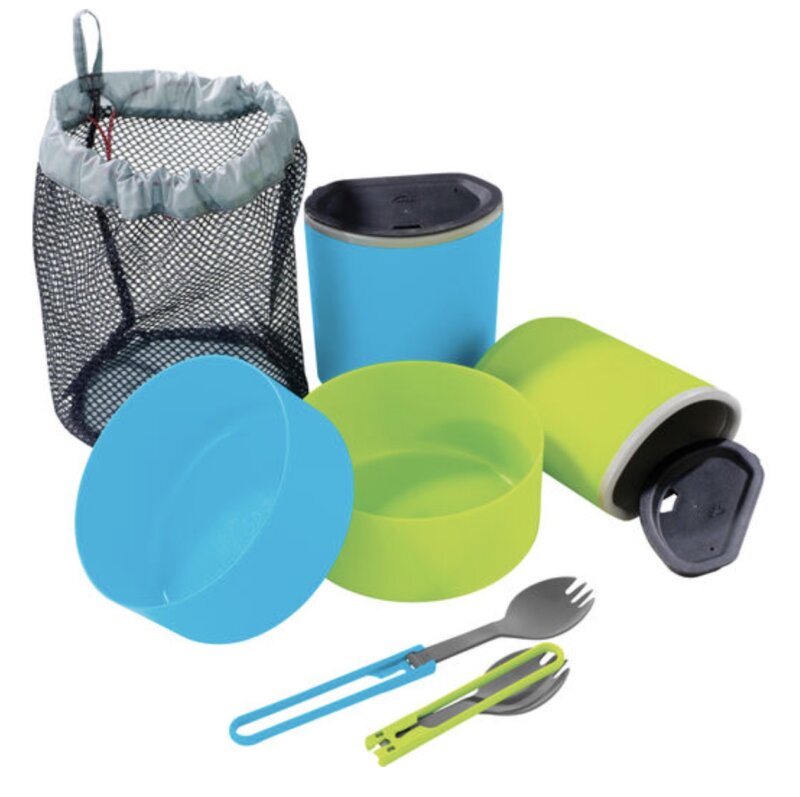 Plastic Bowl, Mug, and Spoon
Plastic Bowl, Mug, and SpoonA lightweight and compact cookware setup. You’ll want a plastic bowl, mug and spoon.
Recommended Kit: MSR 2-Person Mess Kit
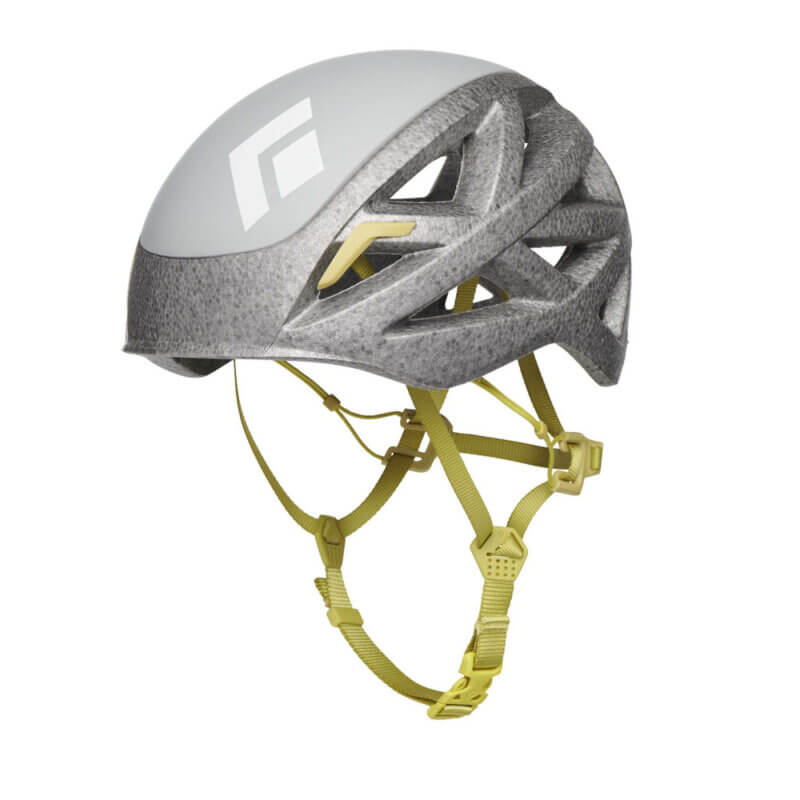 Helmet
HelmetAn easily adjustable lightweight helmet that fits with hat and Balaclava. Make sure this is a climbing-specific helmet. *Climbing helmets are also available to rent (for our introductory climbing courses) at no charge from Alpenglow Expeditions on a first-come, first-serve basis.
Recommended: Black Diamond Vapor Helmet
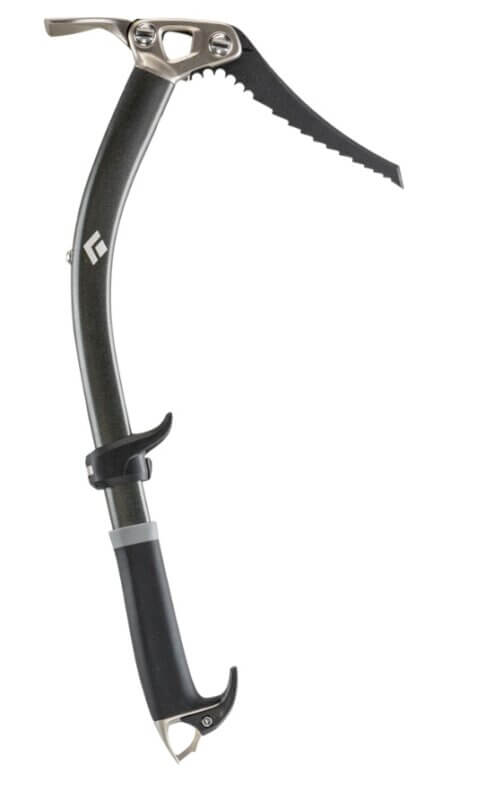 Technical Two Tool Ice Axe (Adze and Hammer)
Technical Two Tool Ice Axe (Adze and Hammer)Two technical ice tools with an Adze and Hammer! We recommend the Black Diamond Viper.
 Ice Screw Clips
Ice Screw ClipsTwo Ice Screw Clips for cleaning ice screws as you follow. We recommend the BD Ice Screw Clipper.
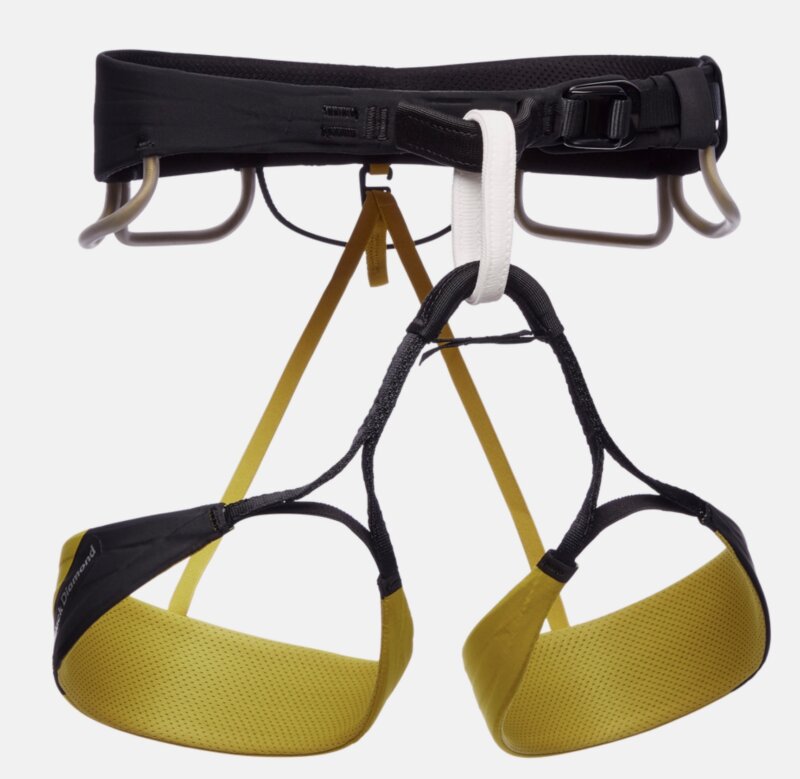 Climbing Harness
Climbing HarnessRock climbing harness that has gear loops, adjustable leg loops and waist belts. We recommend a harness that does not require the belt loop to be “double backed”.
Recommended: Black Diamond Zone Harness
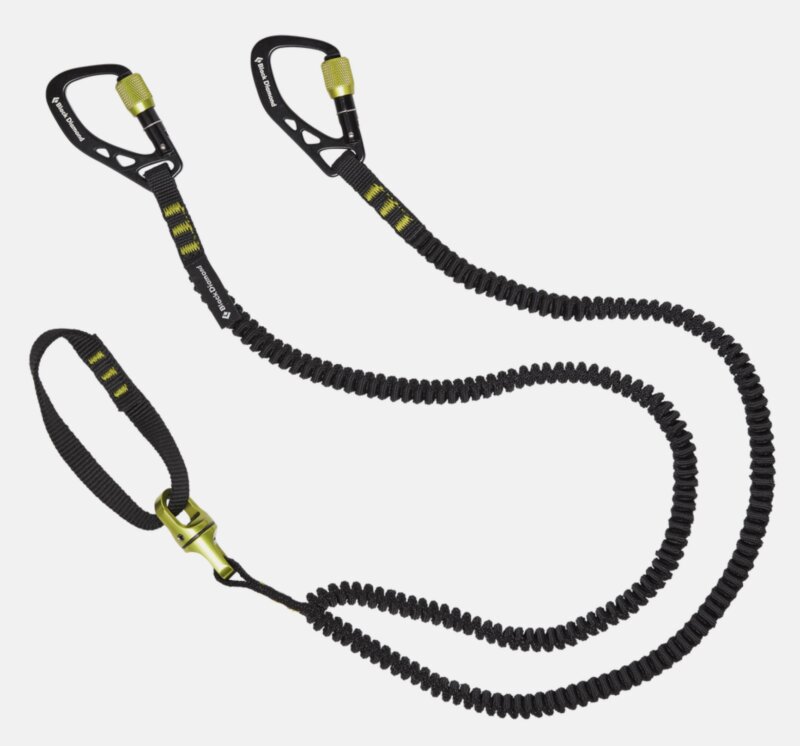 Ice Axe Leash (Dual)
Ice Axe Leash (Dual)A waist leash for both your two-tool technical ice tools.
Recommended: Black Diamond Spinner Leash
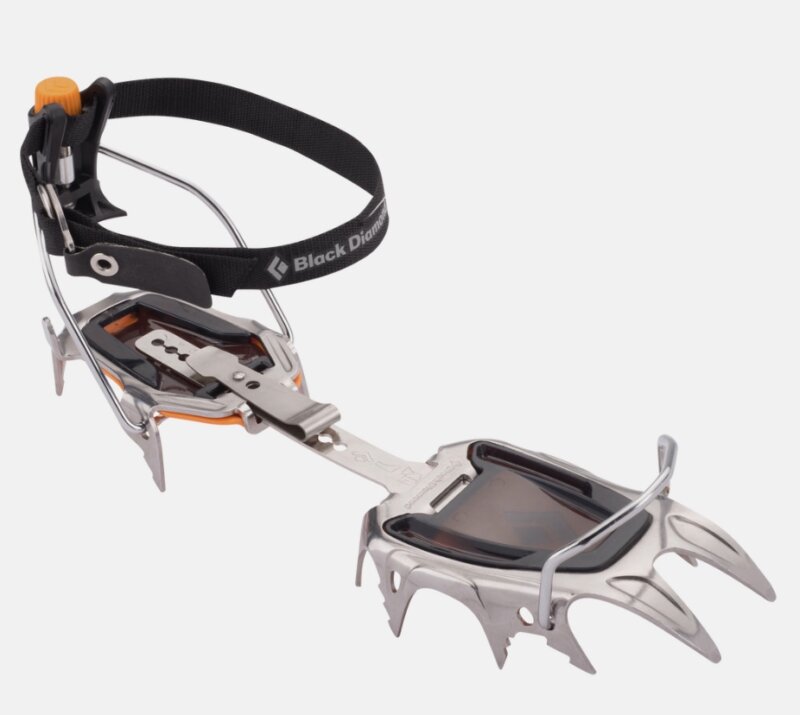 Mountaineering Crampons
Mountaineering CramponsSteel crampons with anti-balling plates are required (so that snow does not build-up in the base of your foot). Make sure that crampons have a heel bail and that they fit snugly on your ski or snowboard boots. Crampons are available to rent (for our introductory climbing courses) at no charge from Alpenglow Expeditions on a first-come, first-serve basis.
Recommended: Black Diamond Sabretooth Crampons
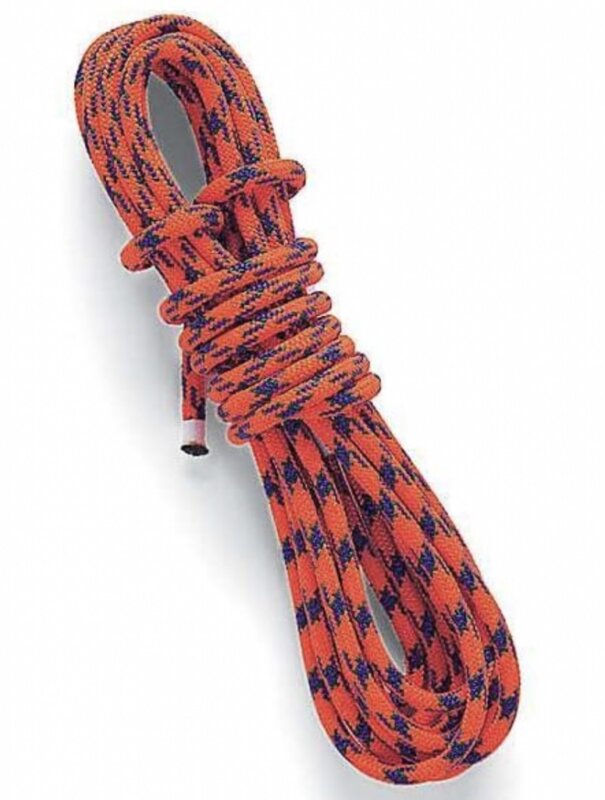 Accessory Cord
Accessory Cord5m of 6mm nylon accessory cord.
Recommended: Sterling Accessory Cord
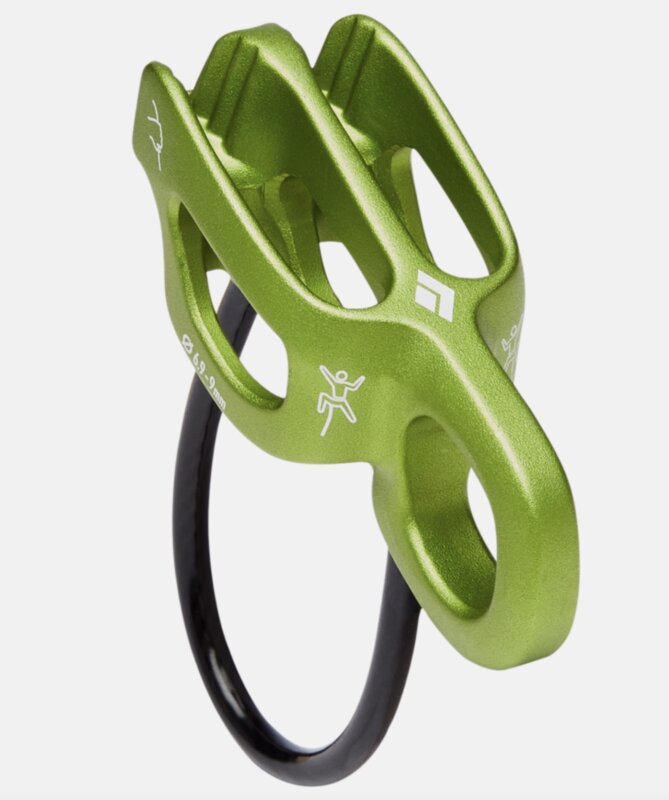 Belay Device
Belay DeviceLight, easy to use + simple. Should have teeth/grooves for skinny ropes.
Recommended: Black Diamond ATC Alpine Guide Belay Device
 Clear Protective Glasses
Clear Protective GlassesClear protective glasses to protect your eyes as we’re climbing through the night. Any clear glasses that you can find will work.
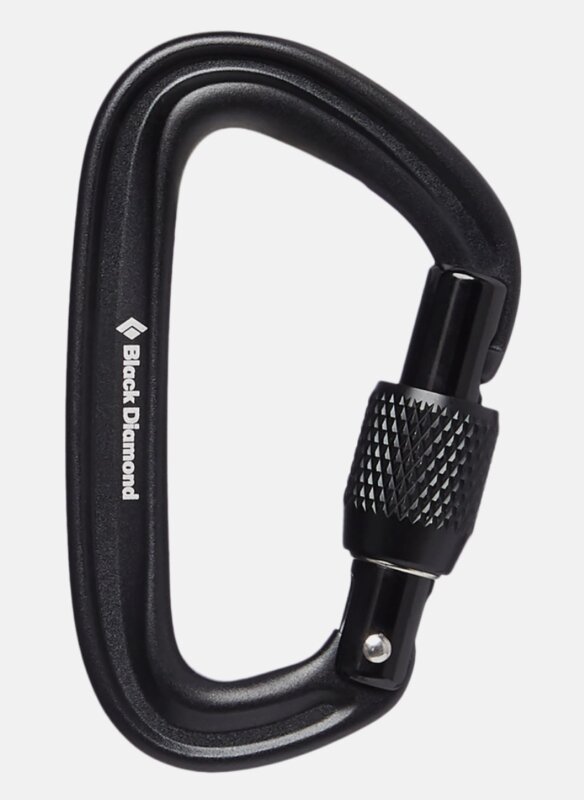 Locking Carabiner (2)
Locking Carabiner (2)Small, lightweight locking carabiners are best.
Recommended: Black Diamond LiteForge Screwgate
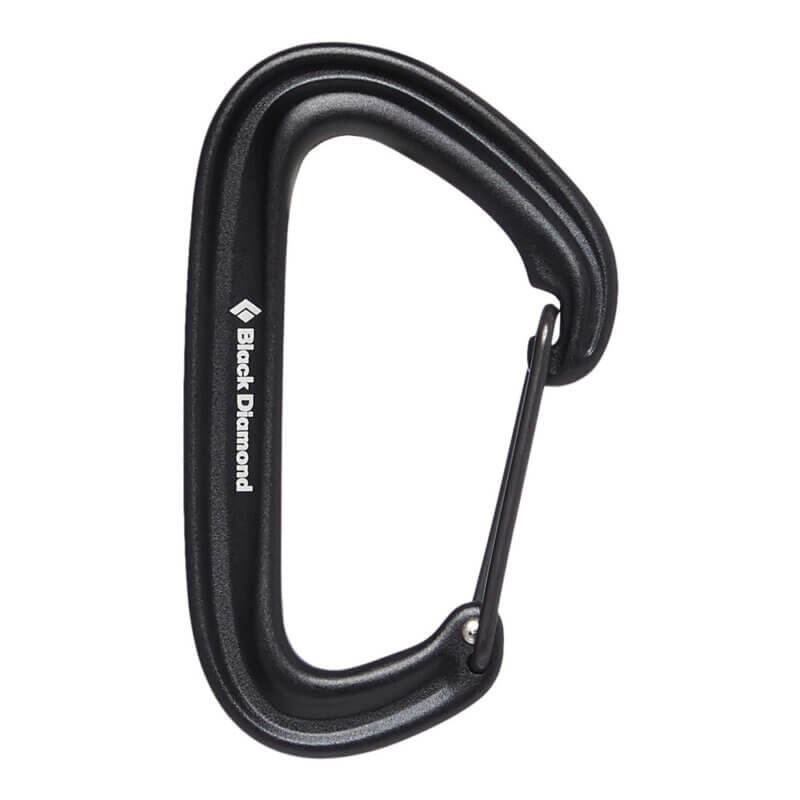 Non-locking Carabiner (2)
Non-locking Carabiner (2)Small, lightweight small carabiners are best, wire-gates are fine.
Recommended: Black Diamond LiteWire Carabiner
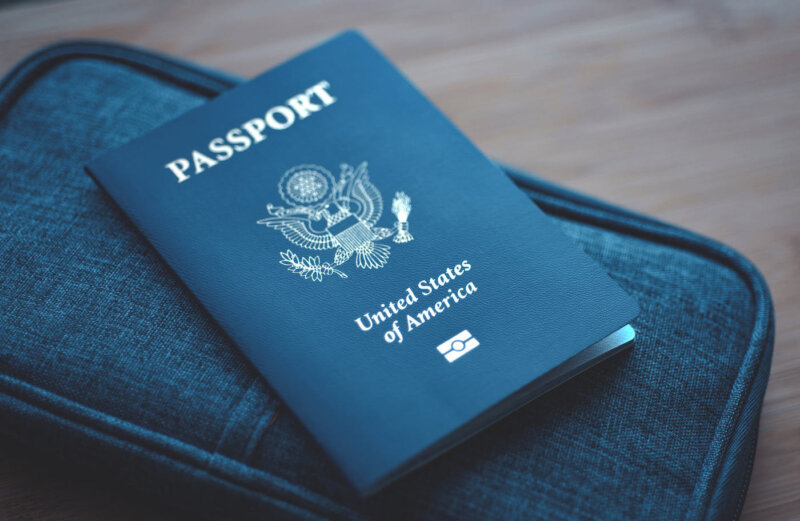 Miscellaneous Items
Miscellaneous Items- Passport (with visa, if necessary)
- 2 luggage locks (TSA compliant)
- Non-cotton underwear
- Wag bags, 1 per night camping as to leave no trace
- Day Pack (optional) – Mid-size for city days/trekking
- Stuffsacks: assorted sizes, for organizing your clothes and gear
- Sunscreen: SPF 30 (or higher)
- Lip balm with SPF 15 (or higher)
- Personal first-aid kit (Band-aids, Ibuprofen, Cough Drops, Moleskin, Pepto-bismol, Imodium, Personal Medications, Saline nasal spray)
- Toiletries
- 3-4lbs of Snack food (a variety of snack food, some whole food, some bars, some gels)
- Hand Warmers
- Flip flops or sandals/crocs – for showers, lounging, etc
- Small Pack Towel
- Face Mask
- Hand Sanitizer
- Knife
- Mountain Face Mask (optional)
- Headphones
- Powerbank (6-10K mAh good for 2-3 phone charges, weighing under 8oz)
Alpamayo & Quitaraju Expedition Questions
While no outdoor adventure can be completely free of risk without losing the essence of the activity, hiring a professional guide is a fantastic way to manage and mitigate this risk. Activities like skiing and climbing have what we call “inherent risk”, which can be defined as a risk that cannot be completely mitigated by a professional. That is part of playing in the mountains. We encourage you to reach out to the office if you would like to discuss this in more detail.
Expedition doctor, Monica Piris, has been on fourteen 8,000-meter peak expeditions. While Dr. Piris does not travel with our team on all expeditions, she is in 24 communication with our expedition leaders. Dr. Piris also works with each member on his or her pre-acclimatization program.
We require Rescue Insurance on all of our international expeditions. Rescue insurance will help cover costs in the event that you need to be rescued off the mountain (Ex: Helicopter/medical evacuation). Travel Insurance (which we strongly recommend) can cover issues that would cause you to cancel your trip in advance, like illness. We do recommend Global Rescue who does offer a Comprehensive Travel Protection option to your required Rescue (Evacuation) Insurance.
THE COST OF YOUR TRIP INCLUDES YOUR LAND COSTS (EXCLUDING IN-TOWN MEALS). THIS INCLUDES:
All lodging according to itinerary, including double occupancy lodging while in town and group lodging in mountain huts.
Breakfasts in town, all meals while on the mountain
Group camping and climbing equipment
All park/climbing permits
Scheduled in-country transportation
Airport transfers
Certified guidesTHE COST OF YOUR TRIP DOES NOT INCLUDE:
Flights to/from the city where the expedition begins.
Additional nights in hotel outside of the itinerary
Airport taxes
Visas
In-town dinners
Immunizations
Tips for guides or local staff
Travel, rescue, or any other type of insurance
Hospitalization or evacuation costs
Single supplement charges
Excess baggage charges
Alcohol
Other personal expenses
Antigen/PCR Covid test cost
The costs of delays or changes to itinerary that are beyond the control of Alpenglow Expeditions or its agents are not included.When an expedition is more than 90 days out, we require a 20% deposit to guarantee your reservation. Within 90 days we require full payment.
We always consider customs. Custom trips make up more than 50% of our groups. Please reach out to learn more!
Climbers must be in excellent physical shape to join this expedition. This is perhaps the most important aspect of high-altitude climbing, and cannot be stressed enough. Regular, challenging exercise for many months in advance of departure is the only way to gain the necessary level of fitness that is needed on big peaks. We highly recommend a structured training regime with a gym or personal trainer to assist you in preparing for climbing at altitude. Please contact us for more information on physical training.
Aside from the technical gear that we are often able to provide on Introductory Courses (harness, helmet, ice ax, crampons), we strongly recommend bringing everything on the Equipment List. These kits have been dialed and tested by our guides for over 20 years; while you may not end up using everything you bring, weather variability in the mountains demands that we’re ready to dress for any and all conditions!
Alpenglow is the best
“I’ve been climbing with Alpenglow for over ten years. After my first expedition, I knew I’d found the best team. I feel like I’m a member of the Alpenglow family, and have come to know and love many of their guides, office staff, and programs. Alpenglow is truly the best!”
Evan M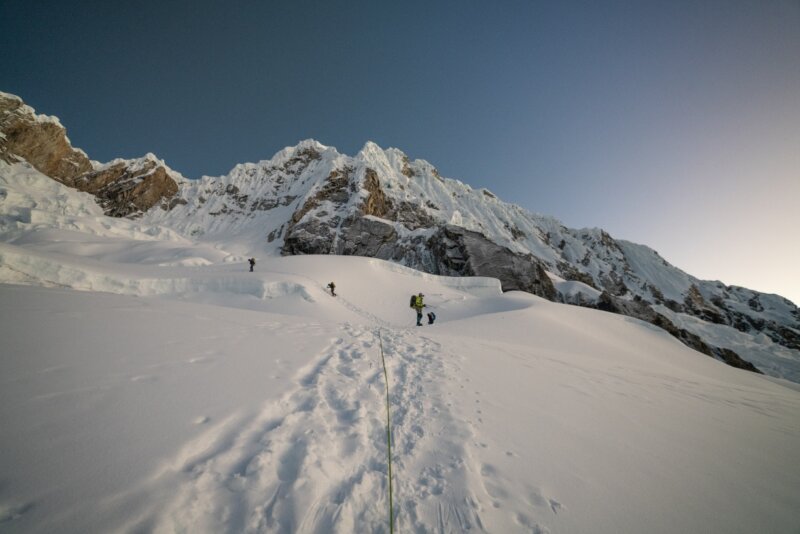
- Learn More
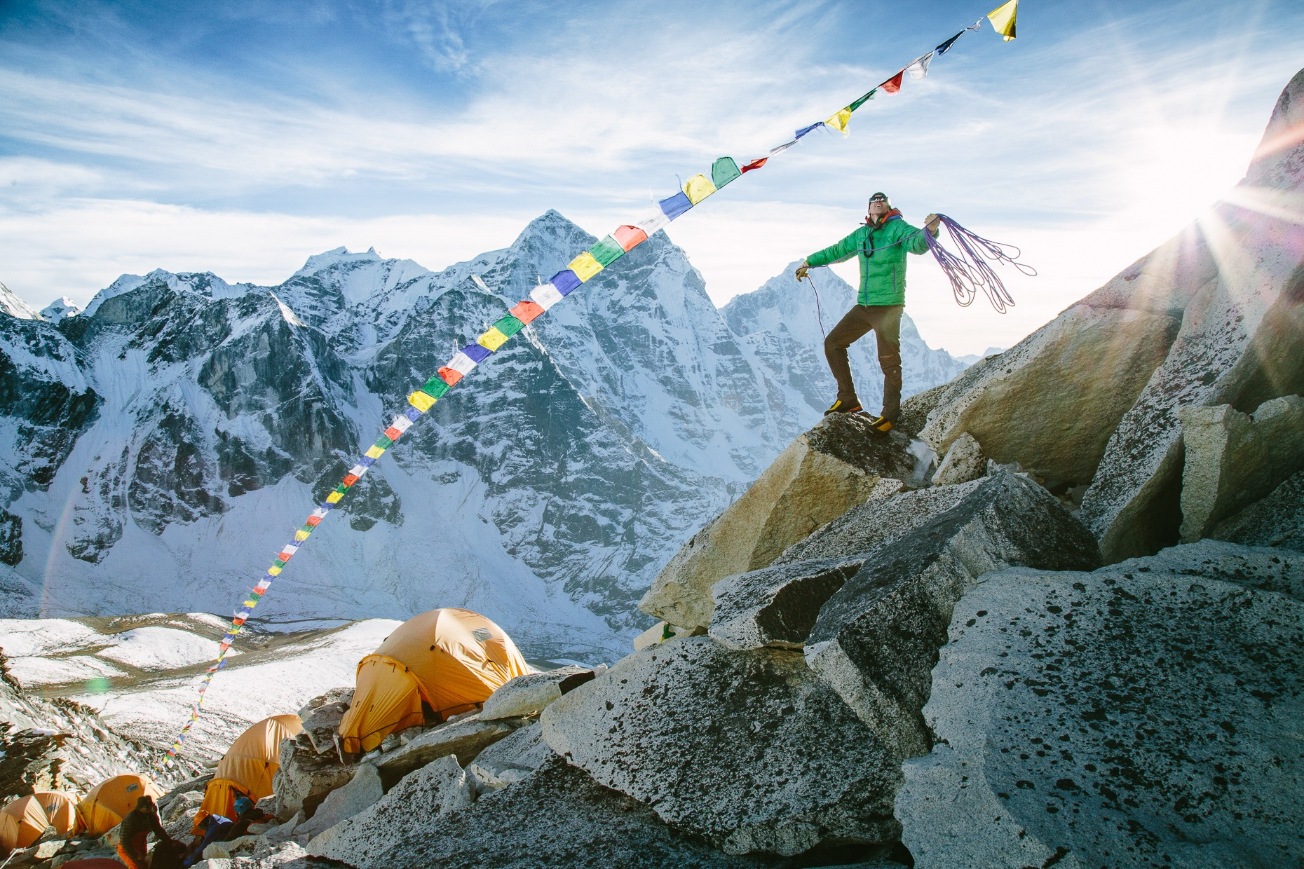
- Learn More
Mountains Of Bolivia Expedition
Intermediate Next Available
July 18, 2026 – July 30, 2026 13 Days Bolivia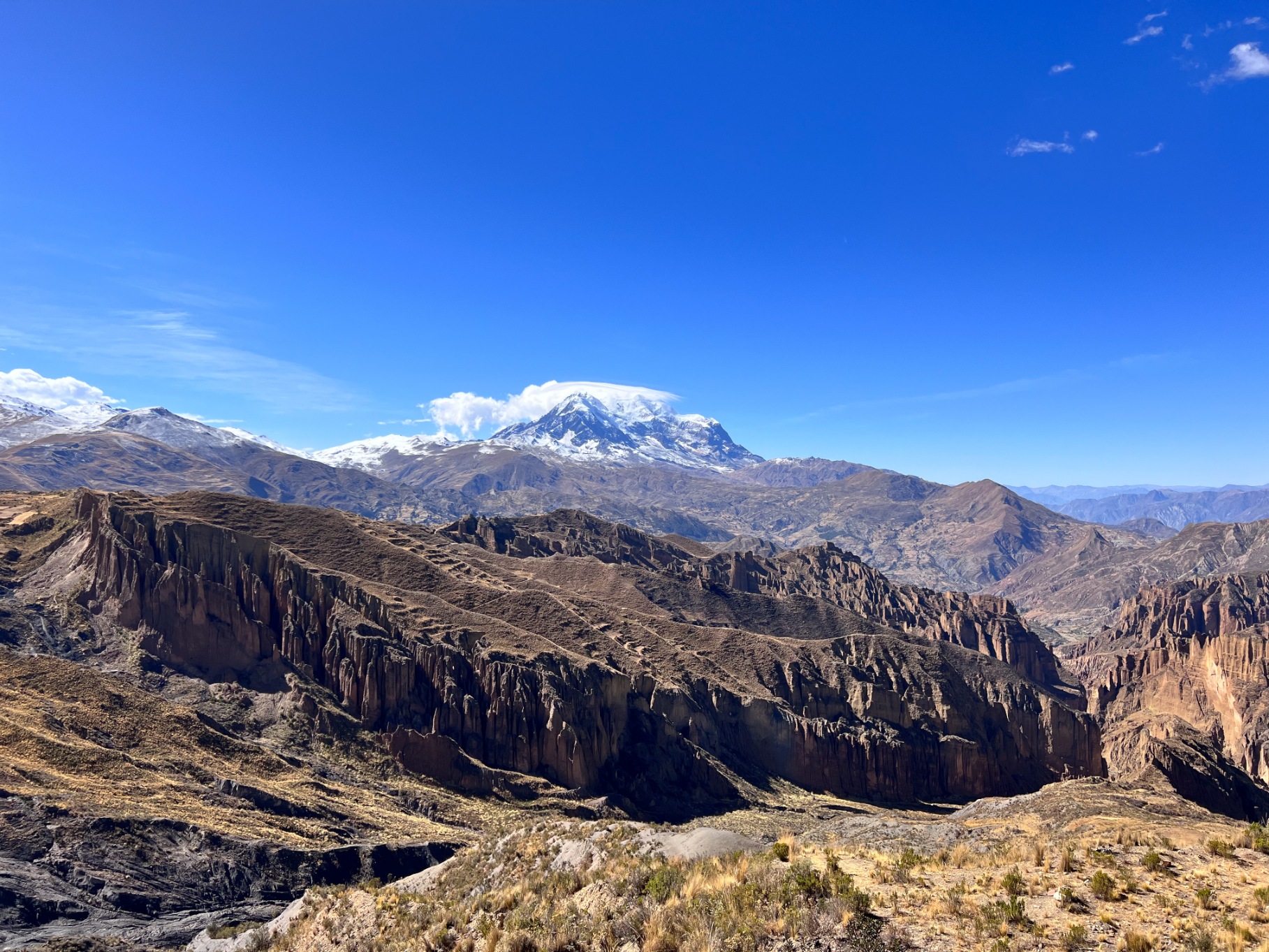
- 32.653179° S, 70.010868° W Learn More
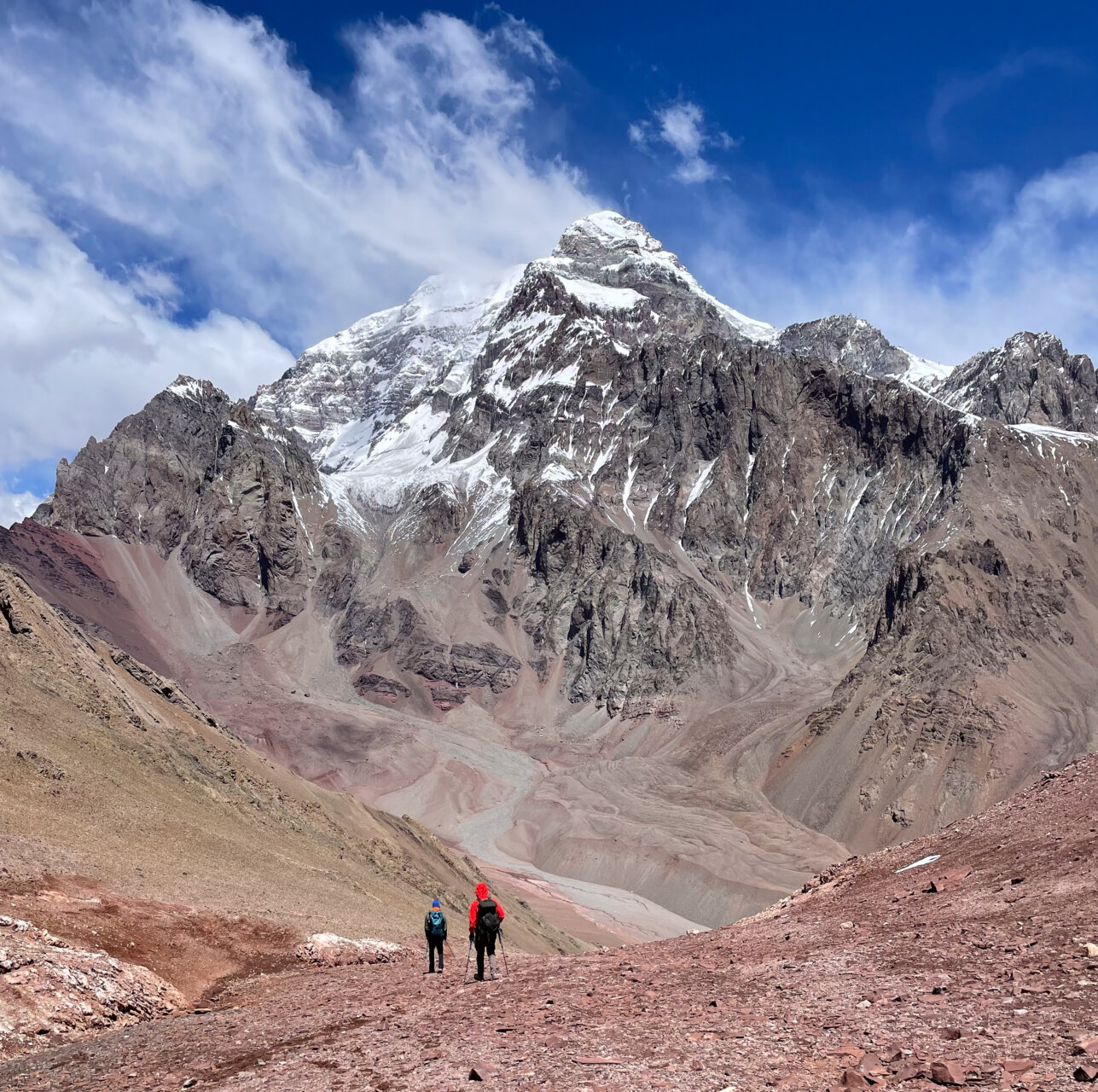
- 39.34° N, 72.88° E Learn More
